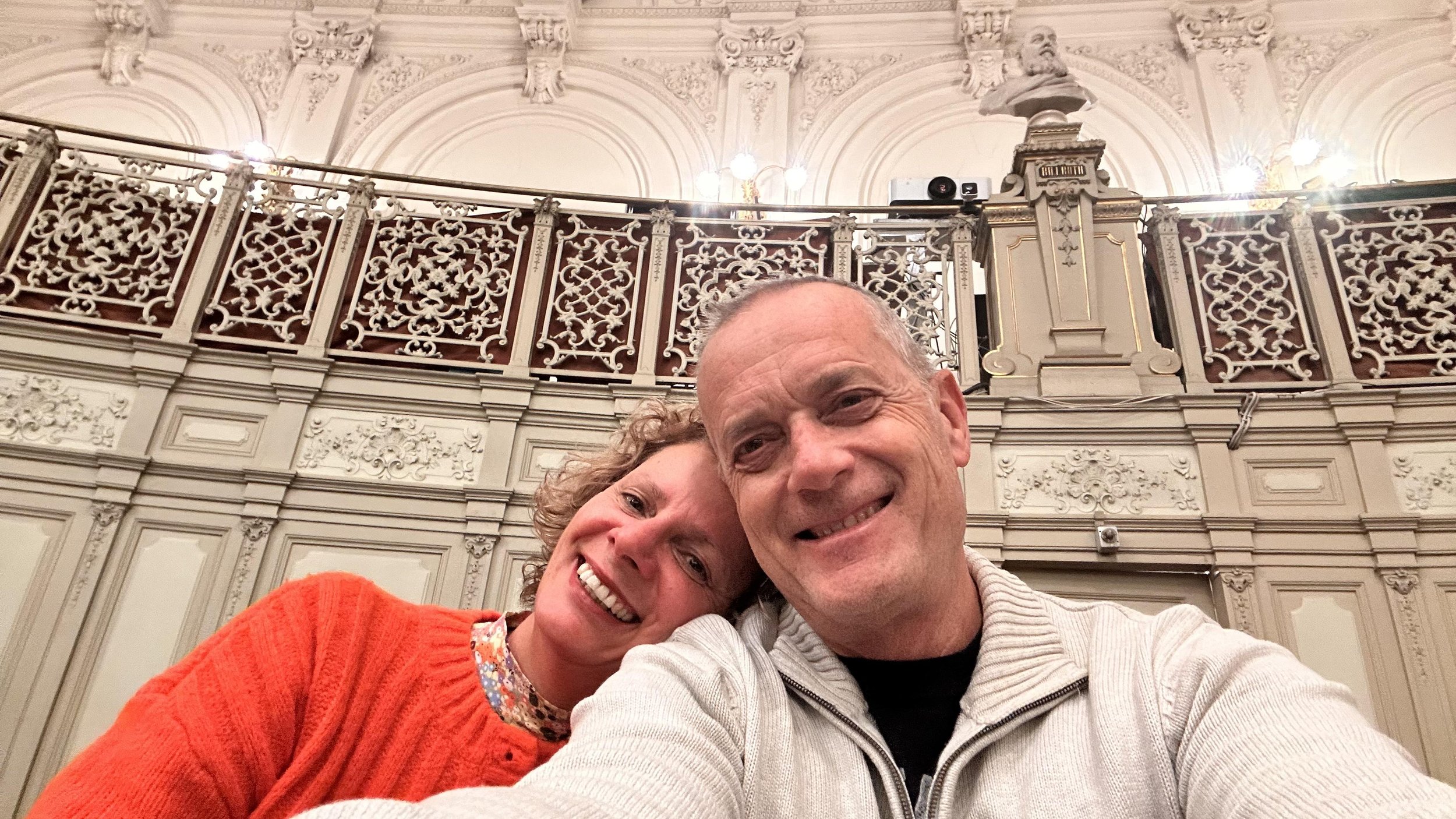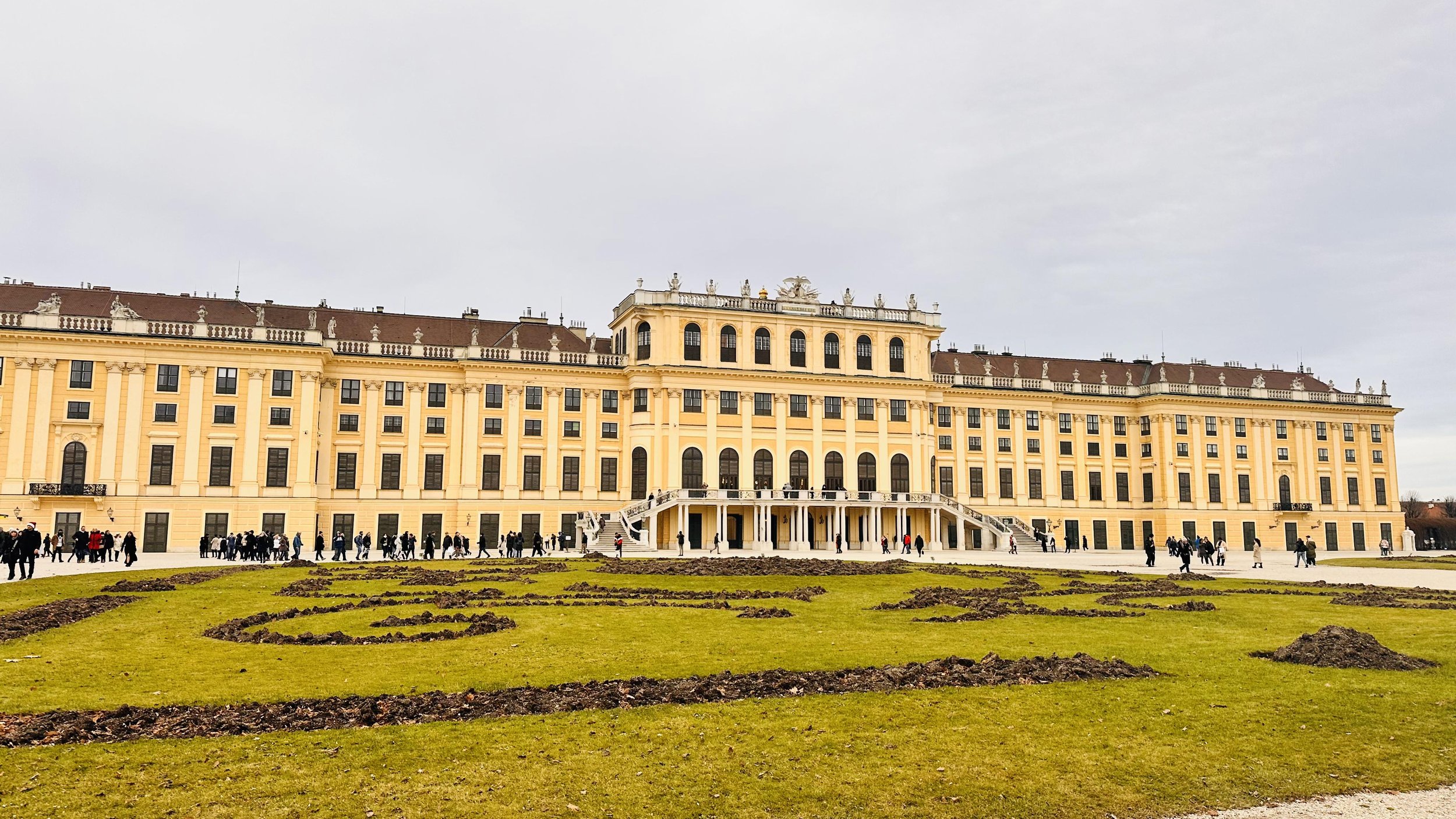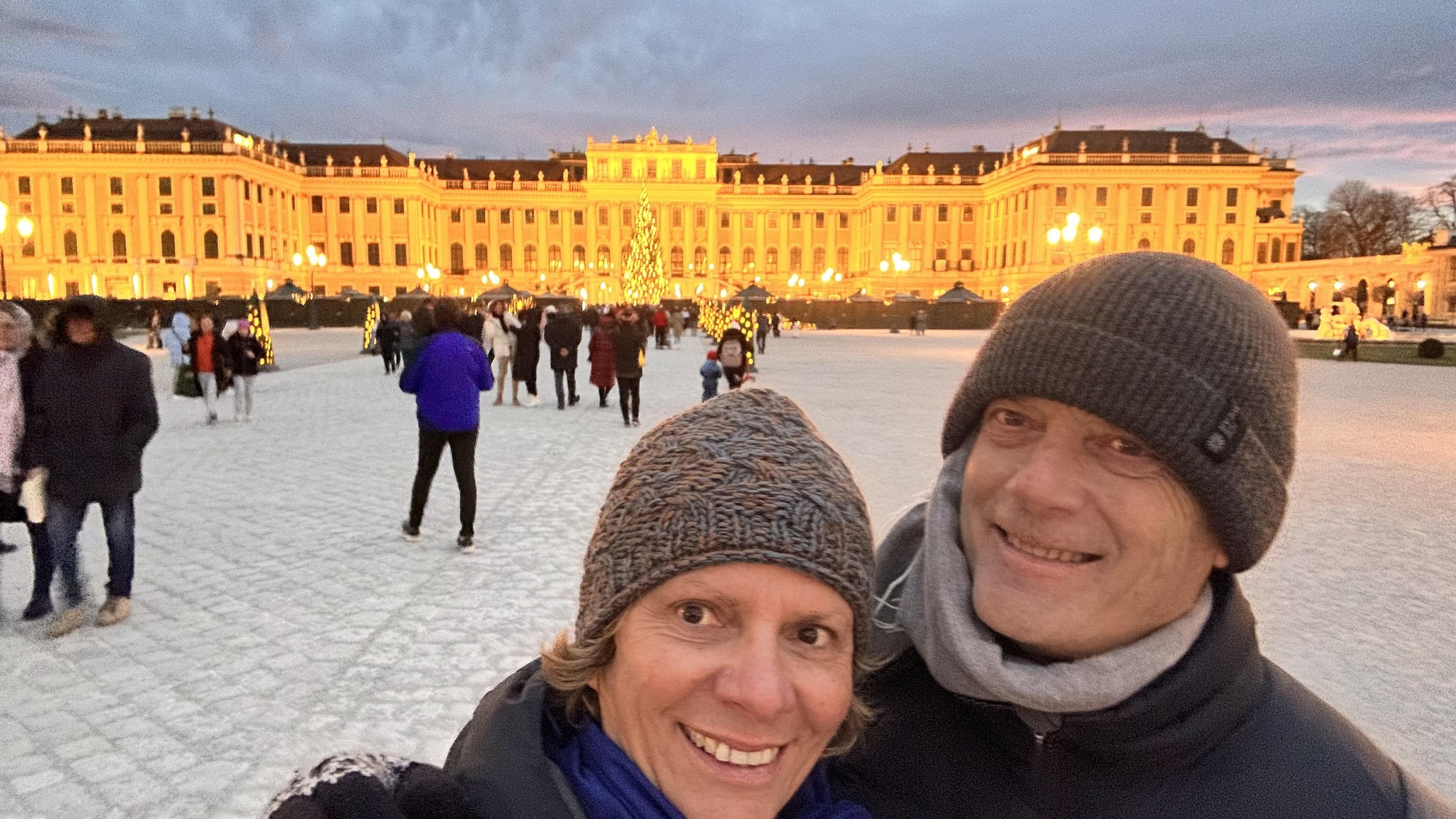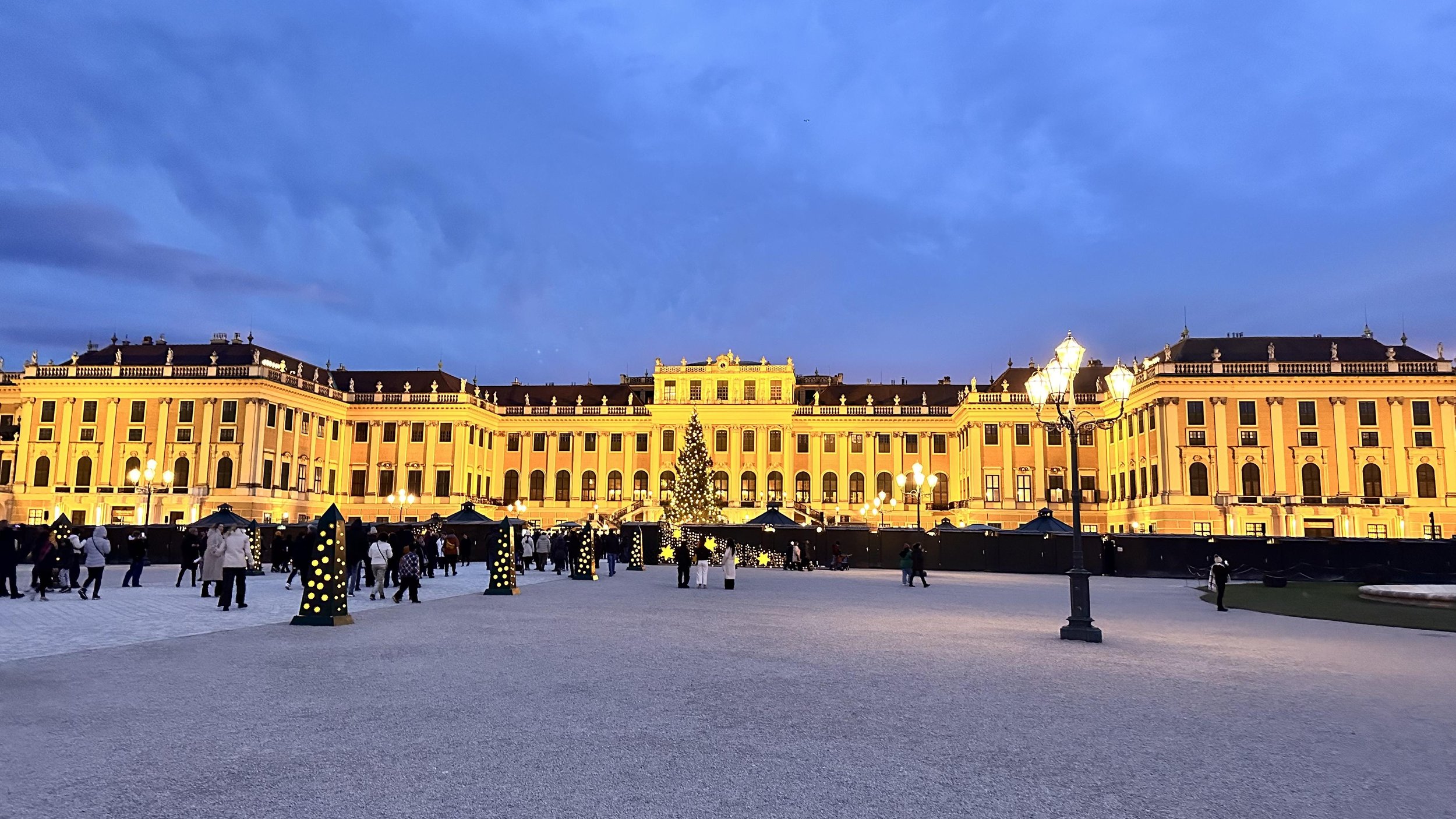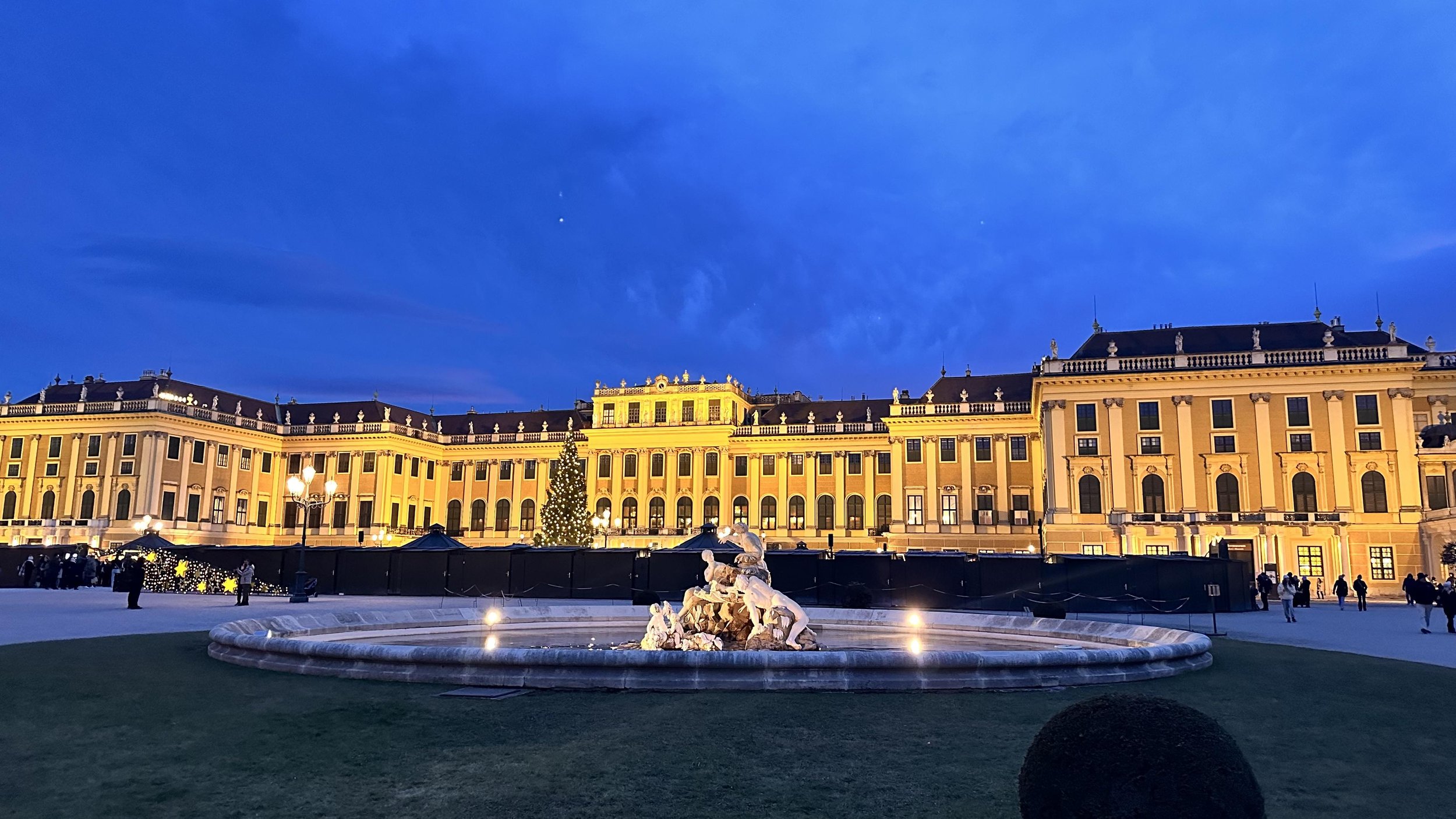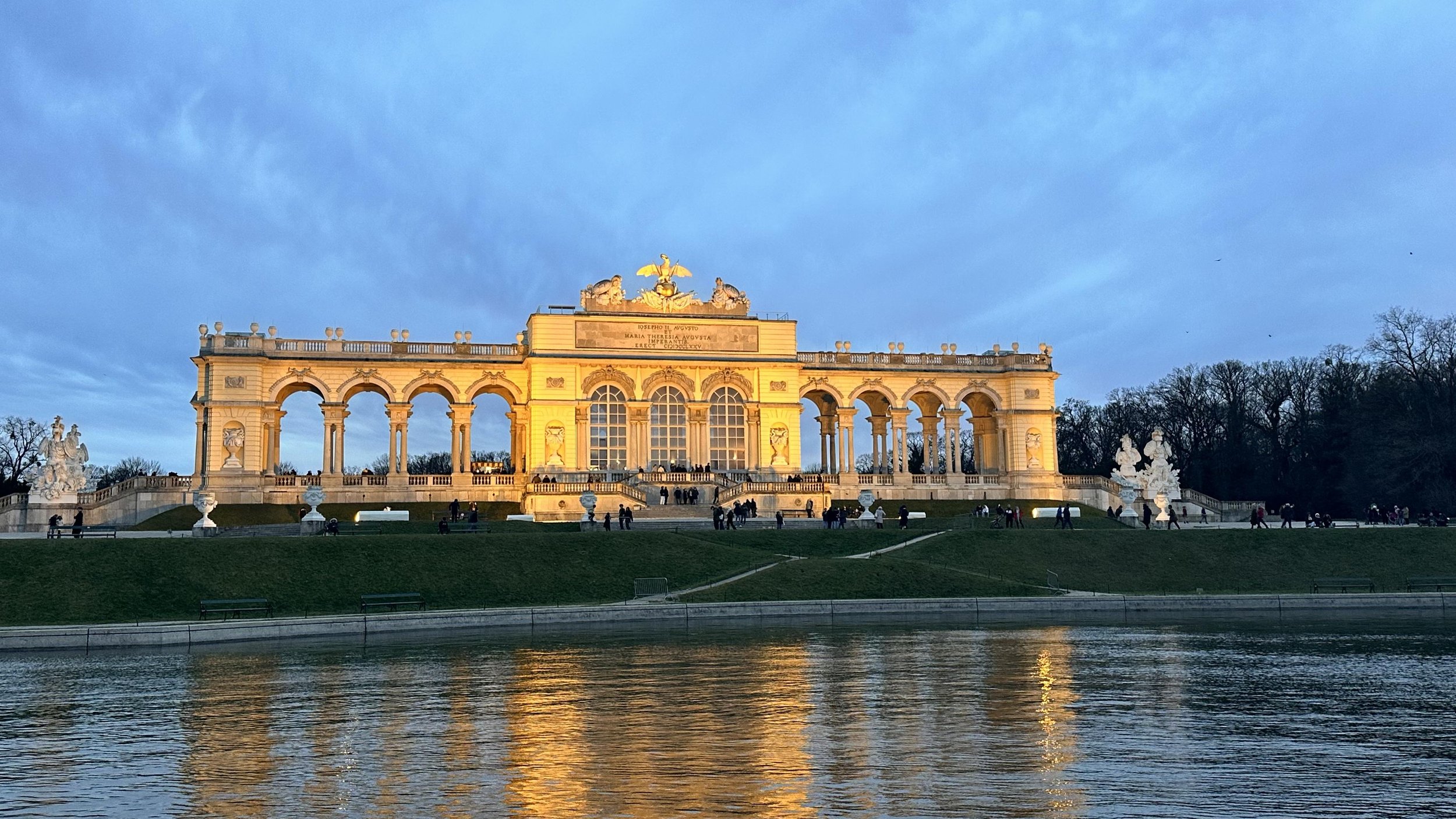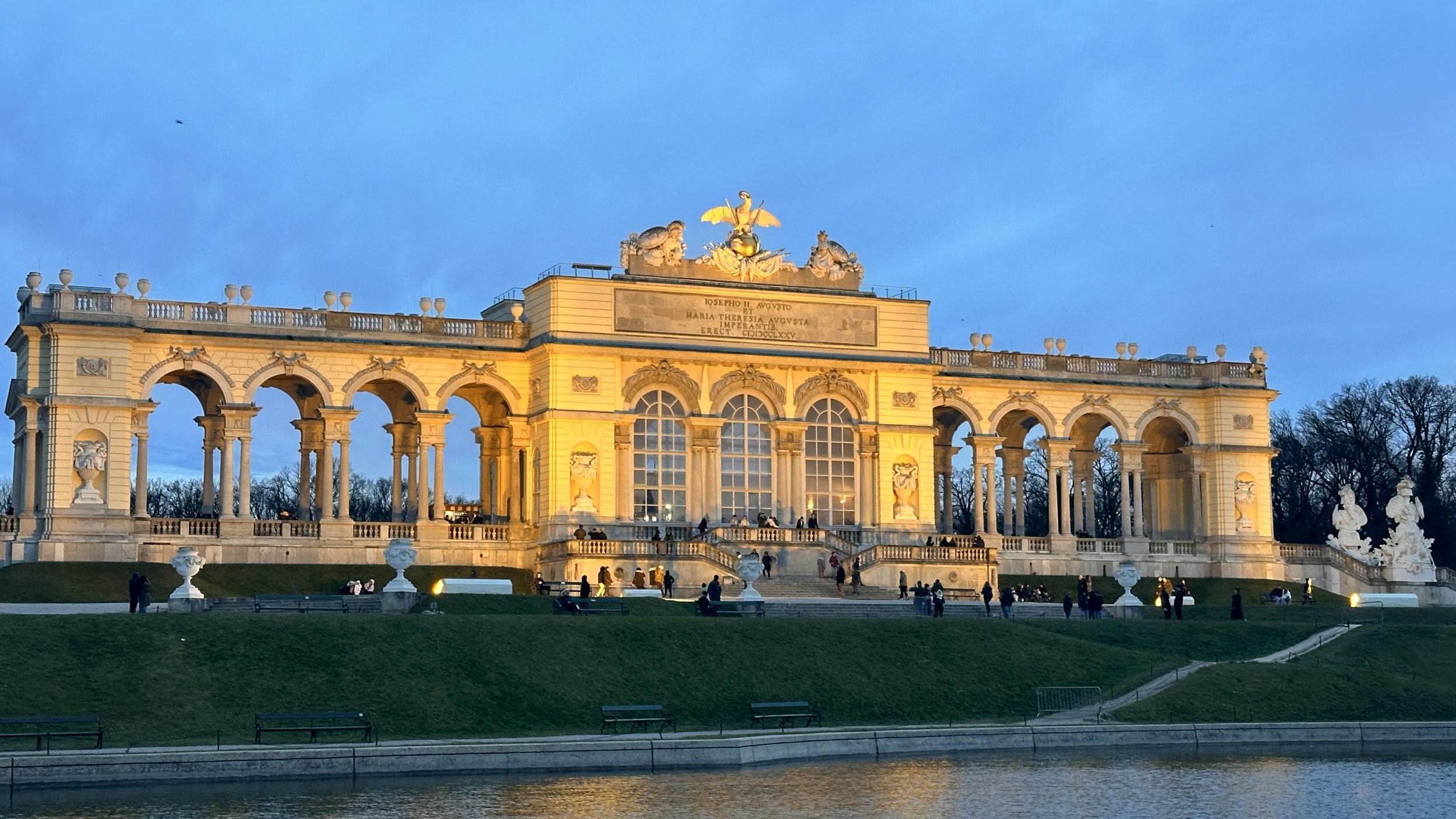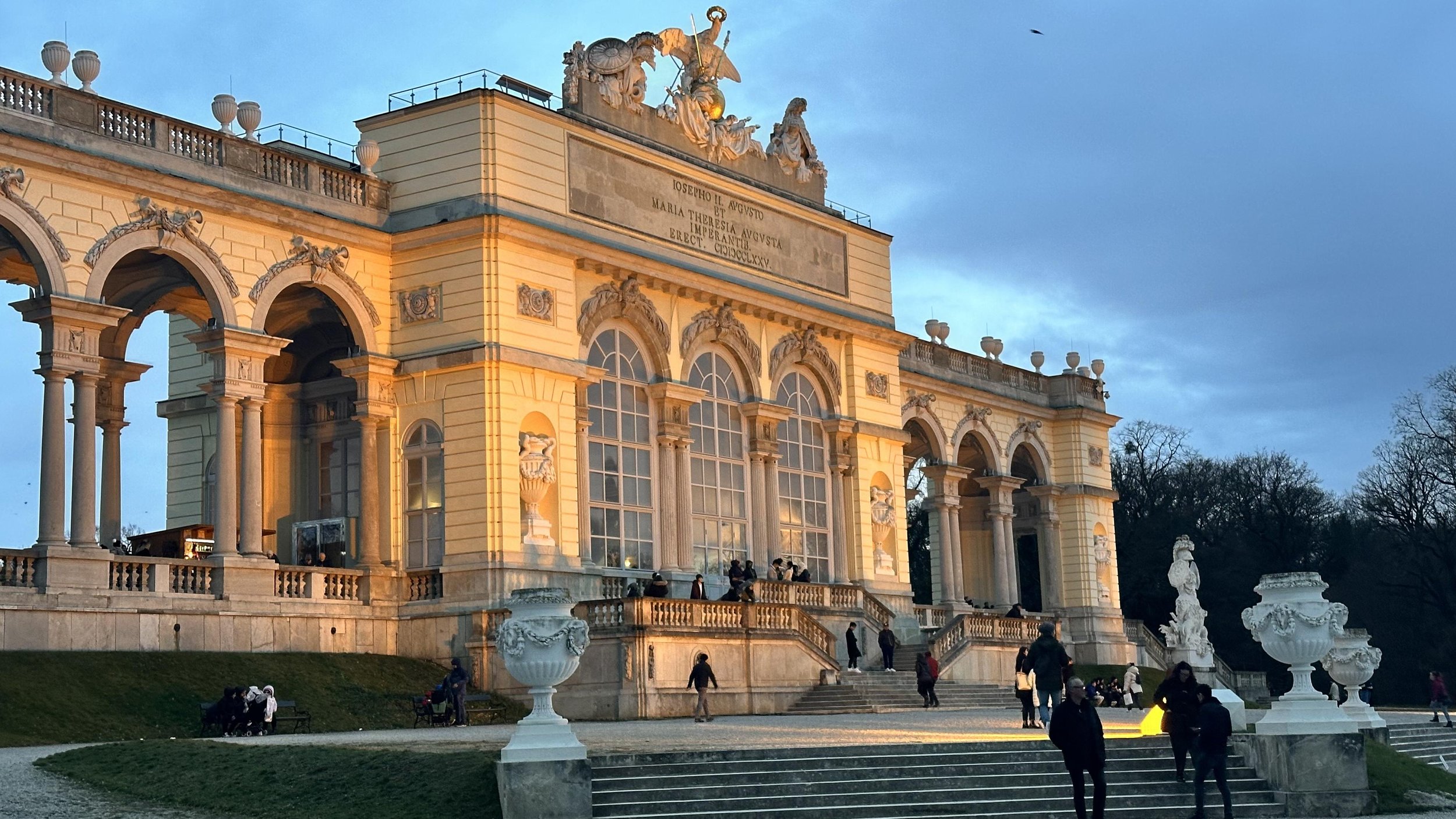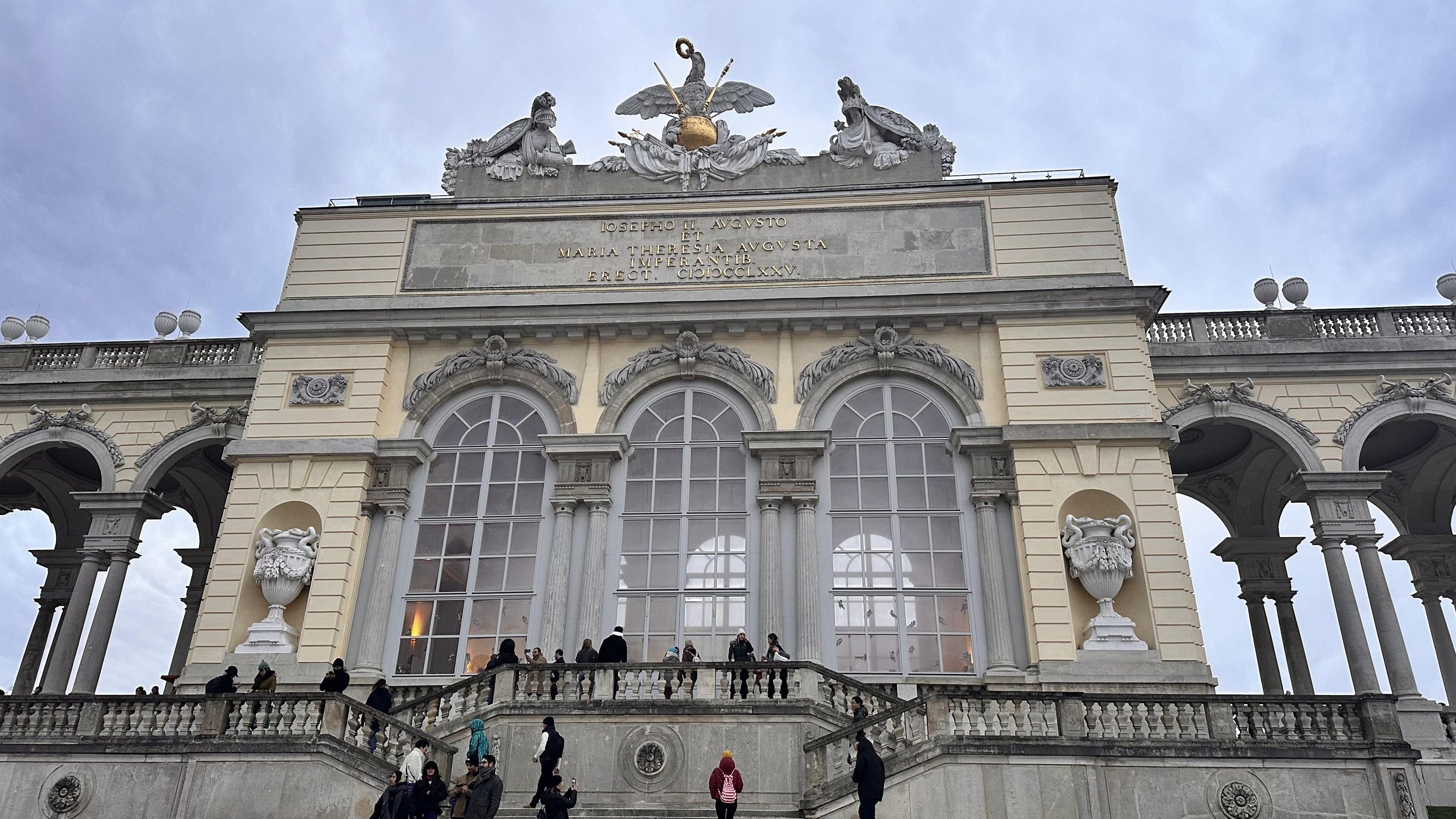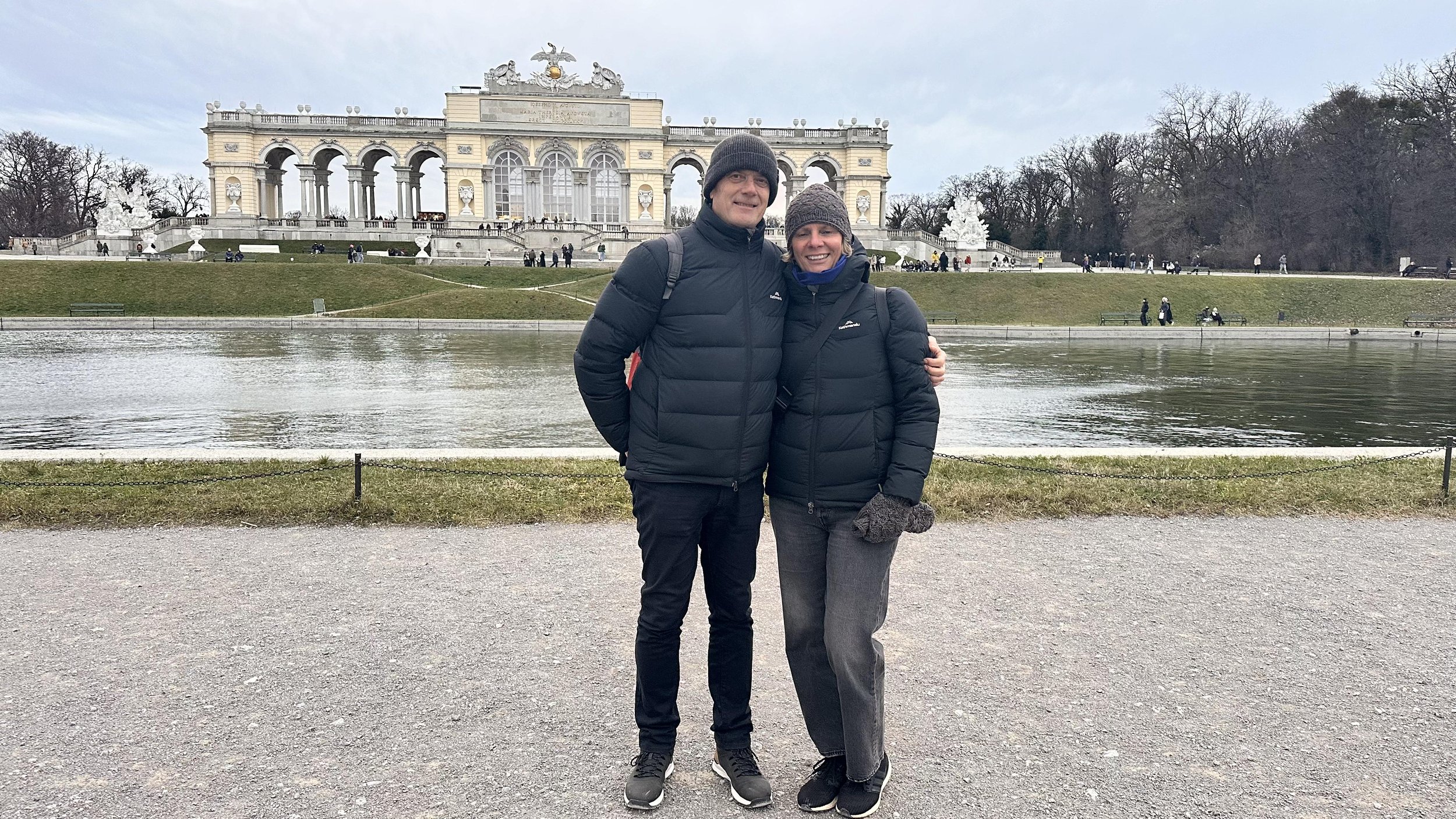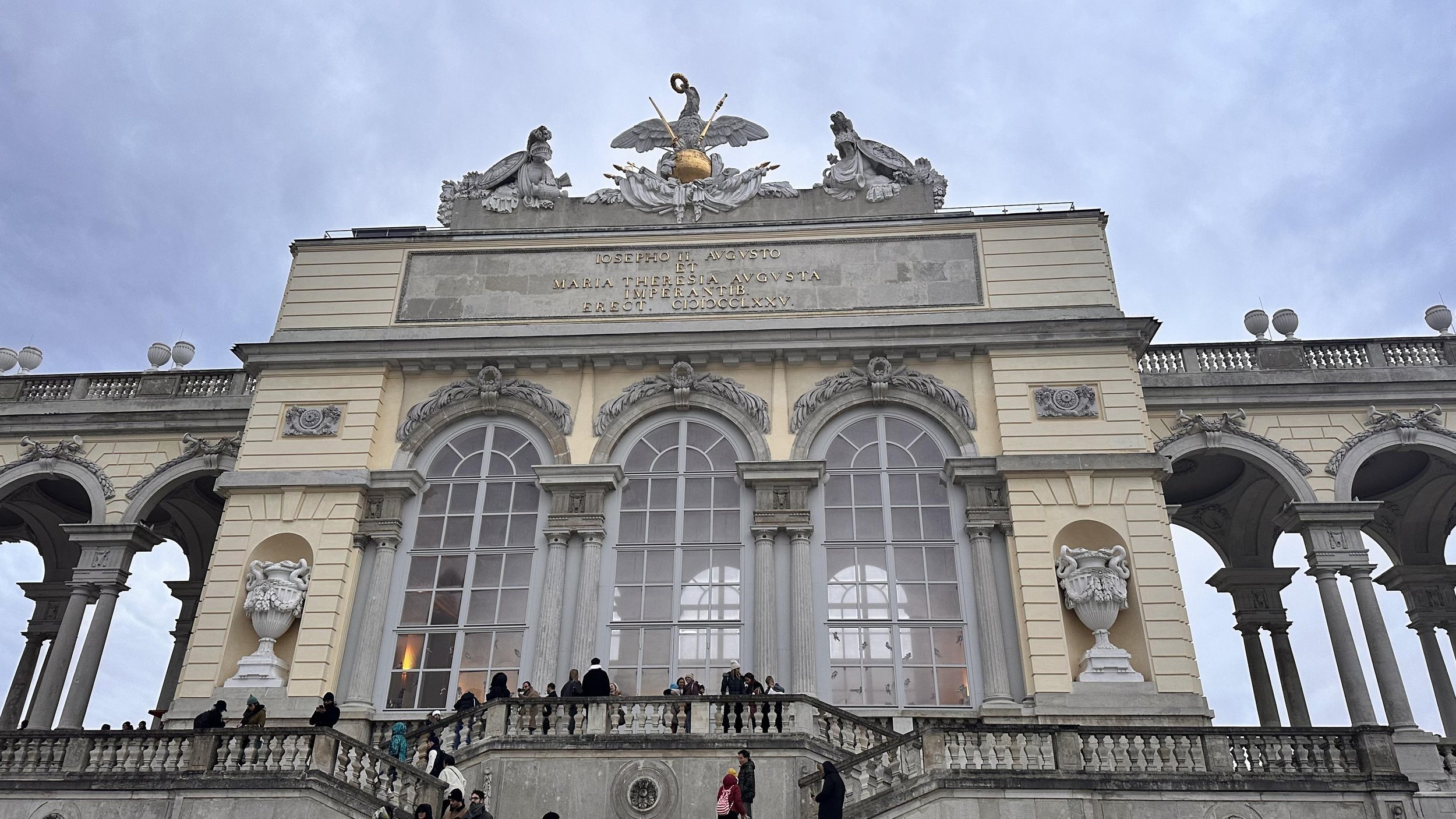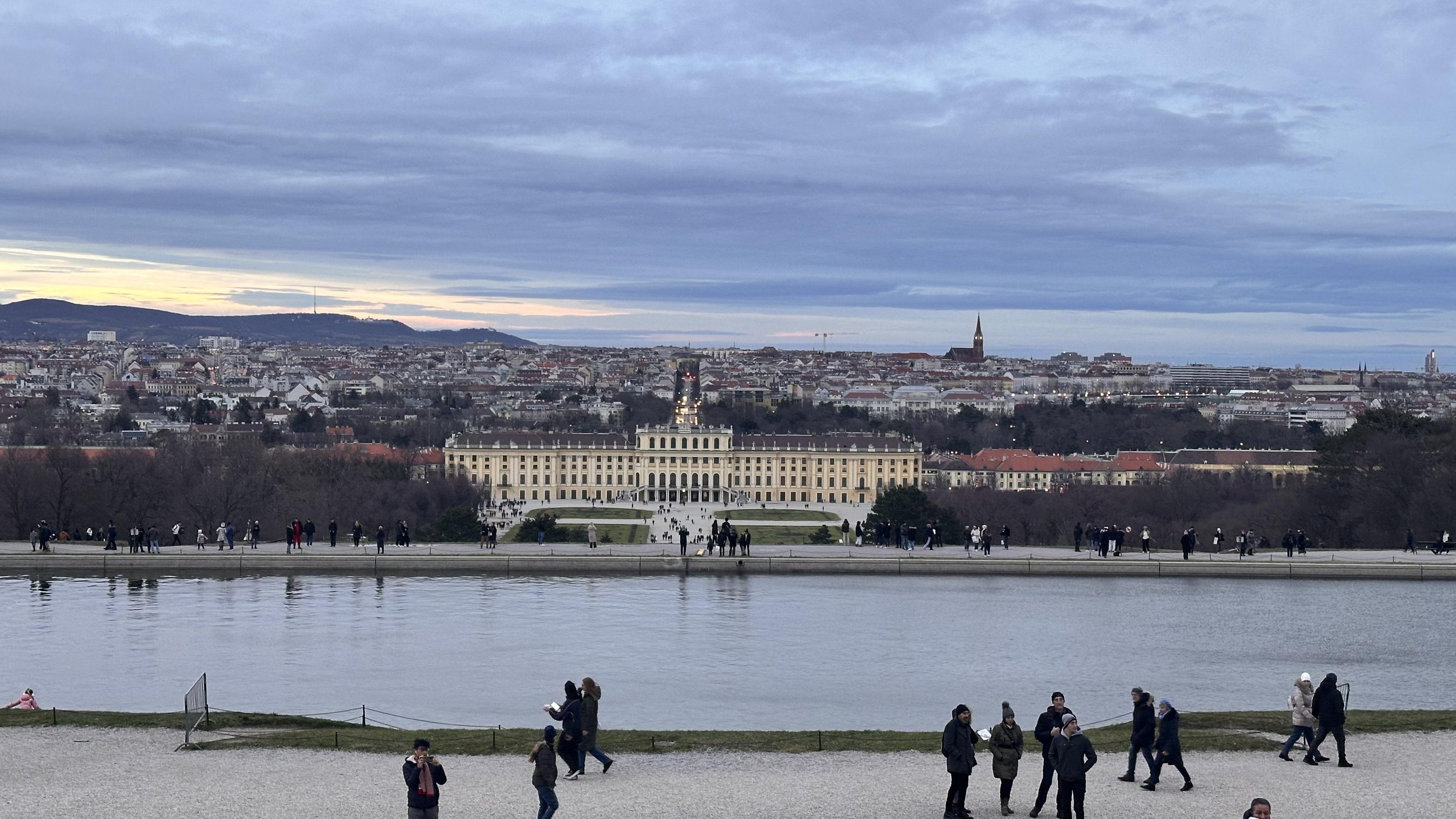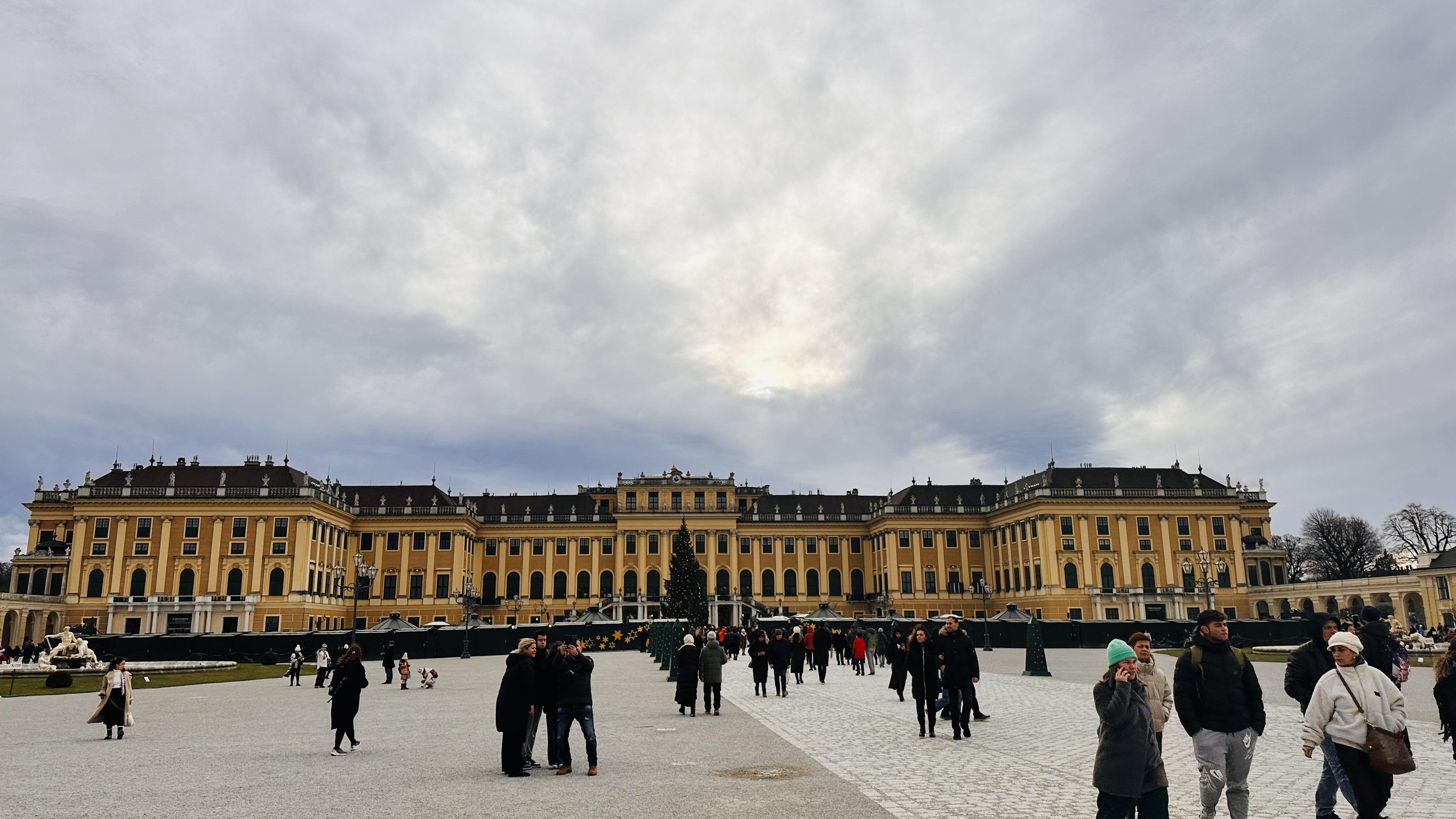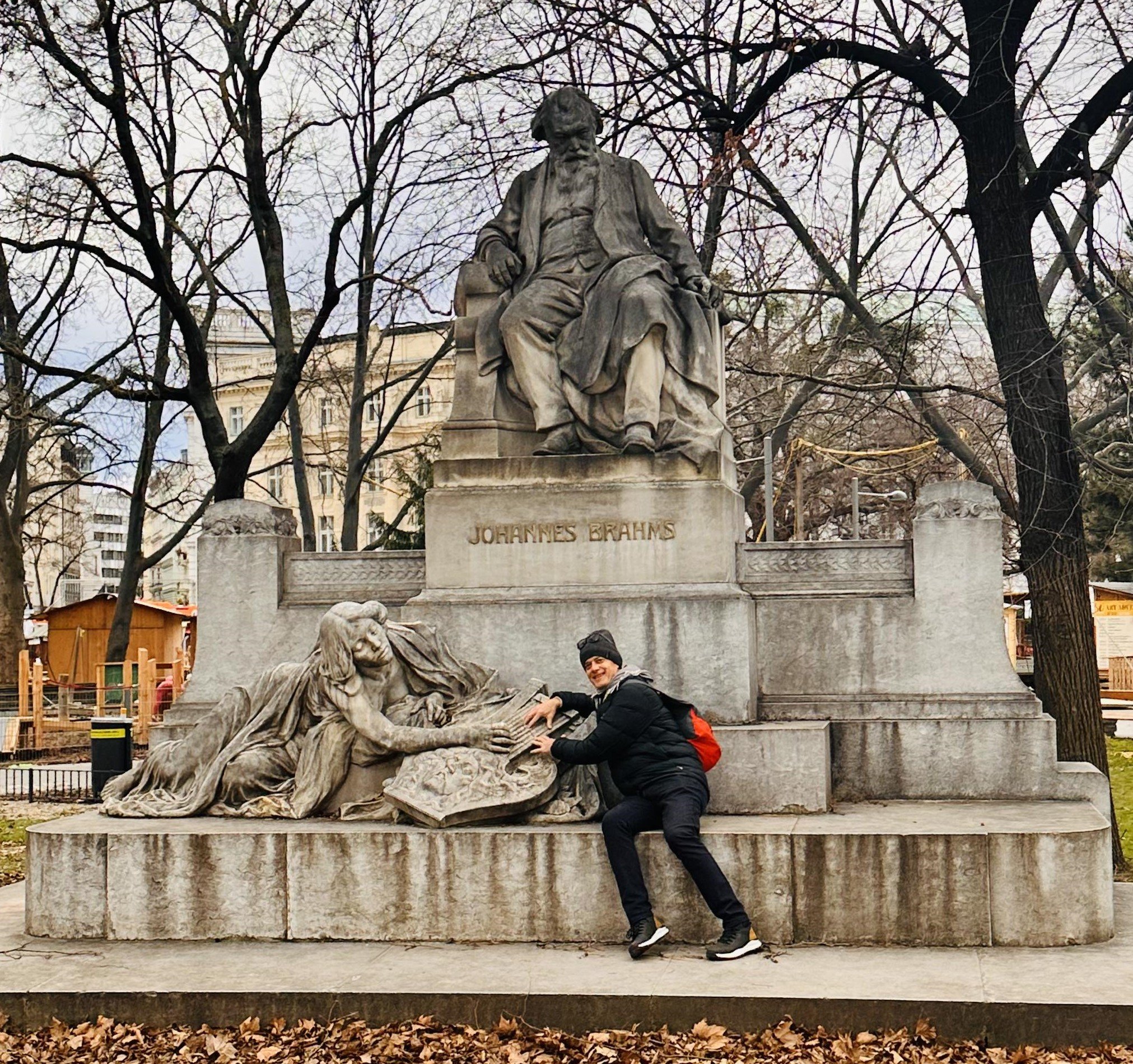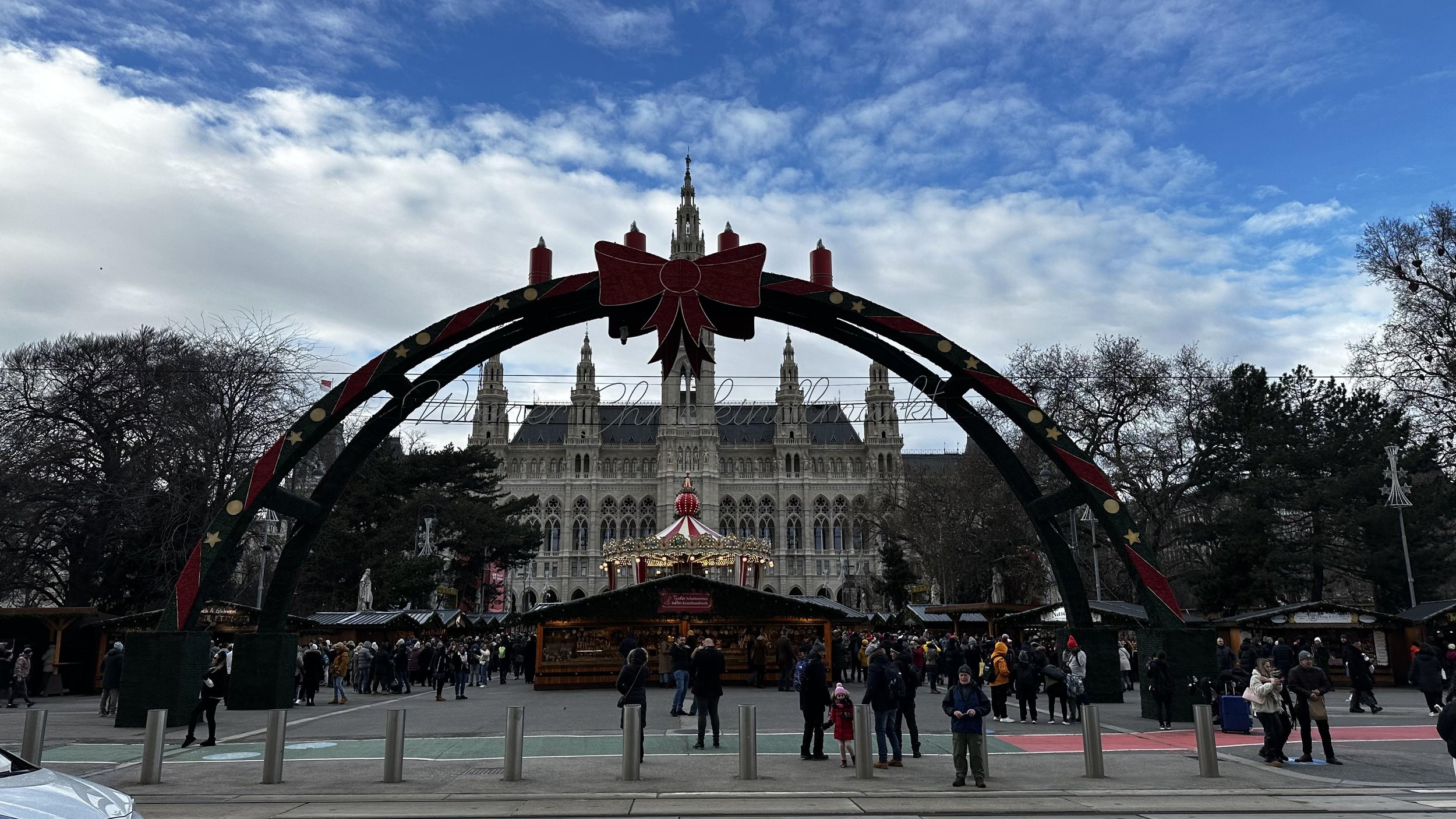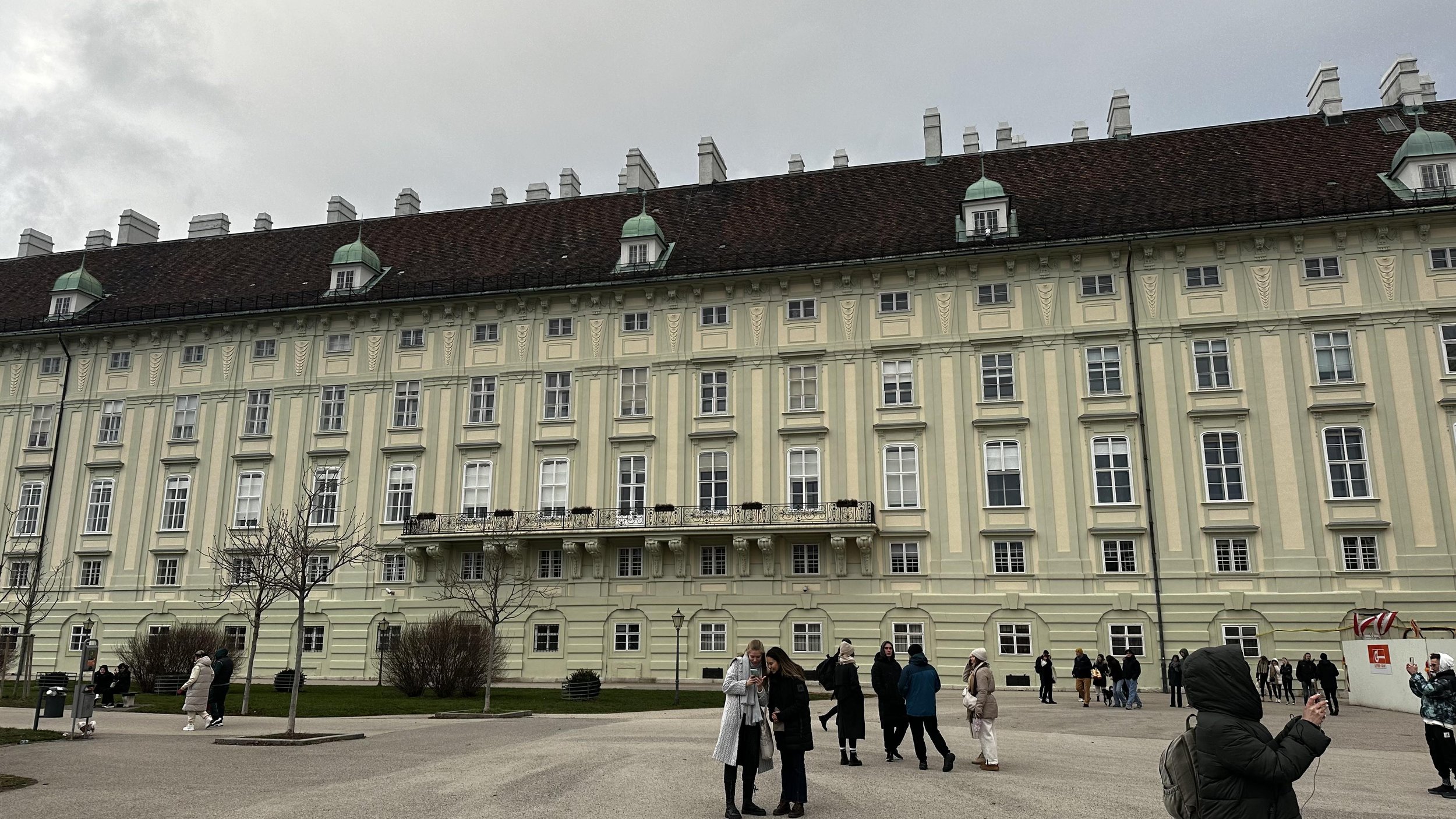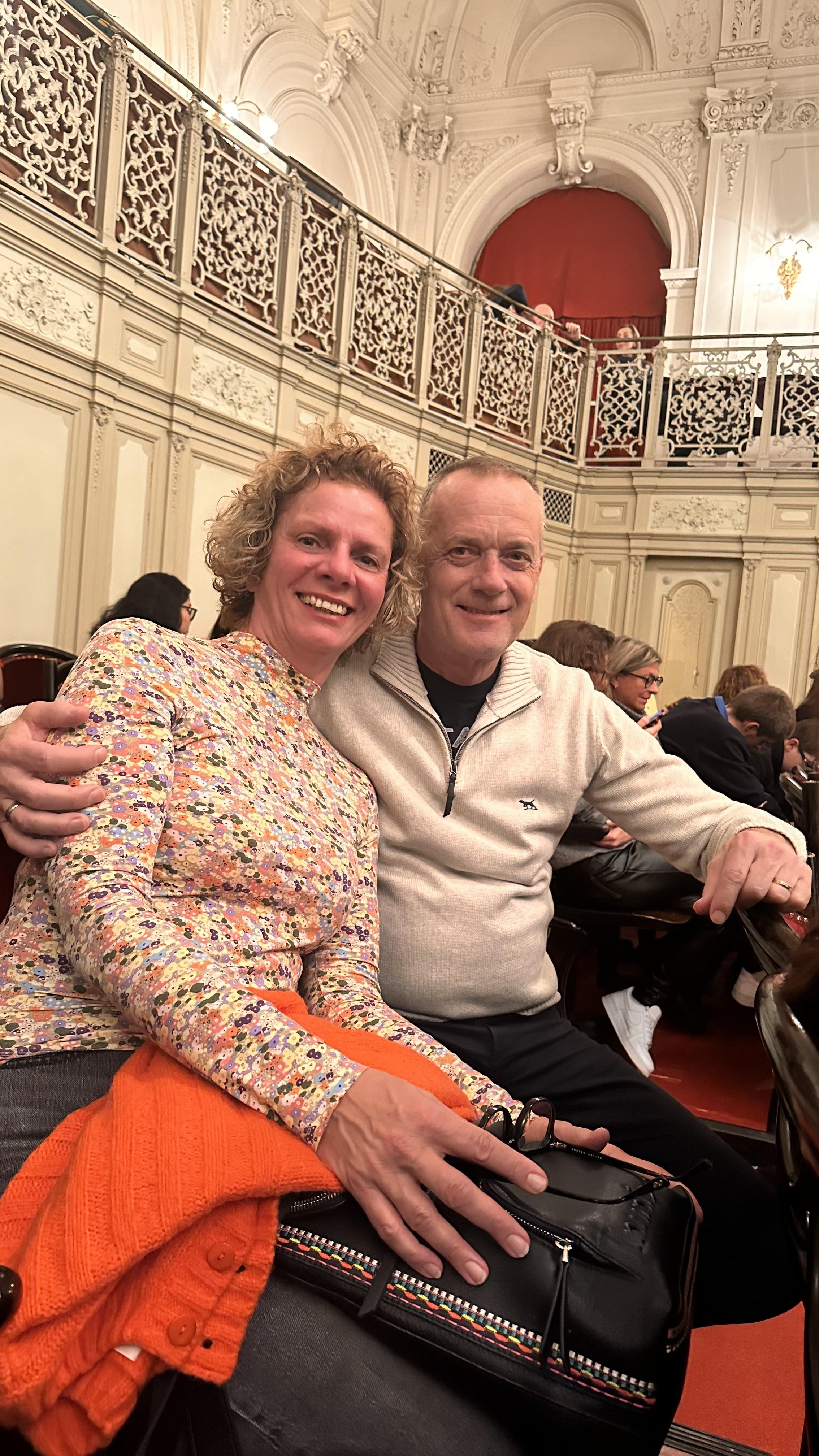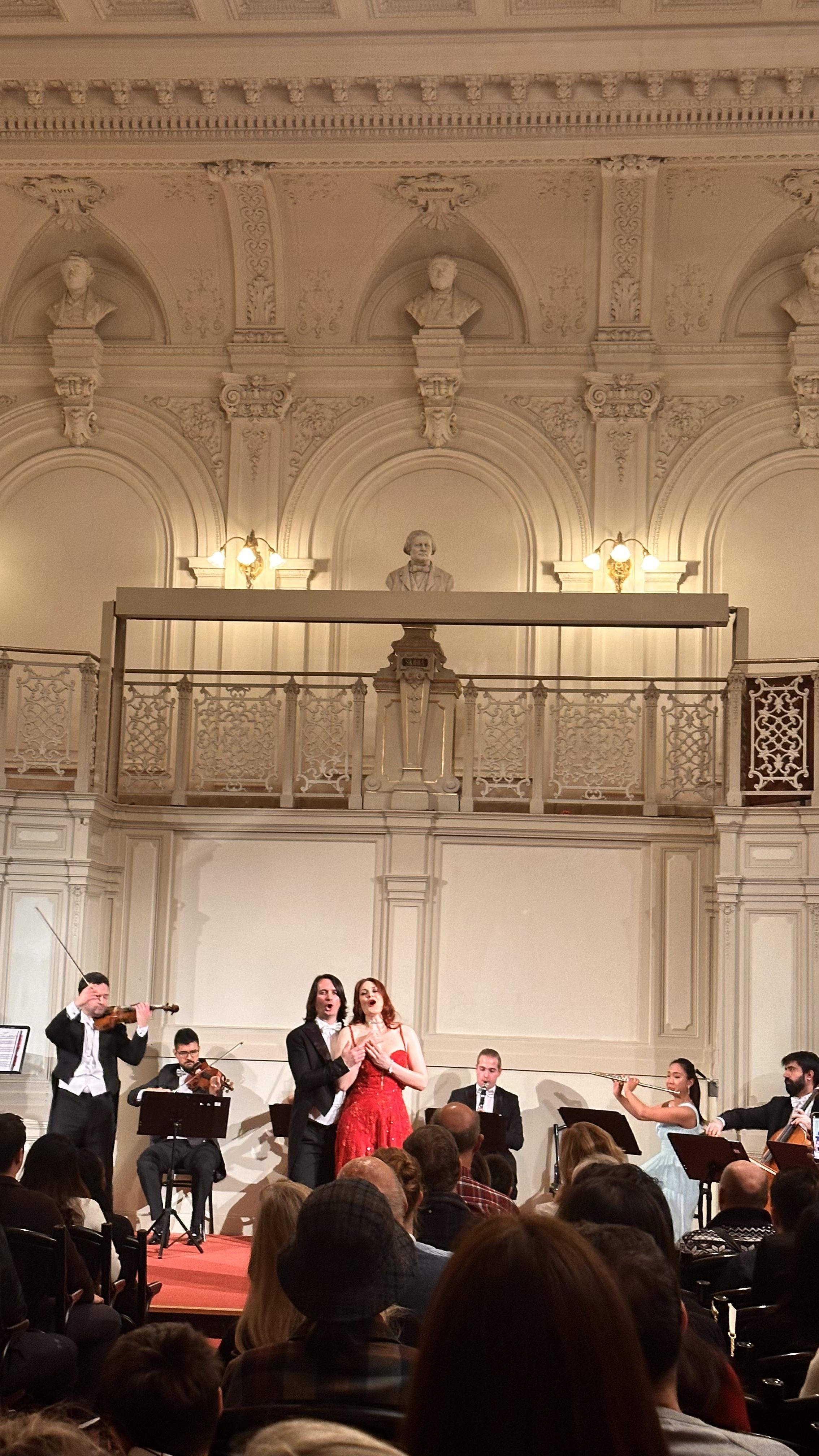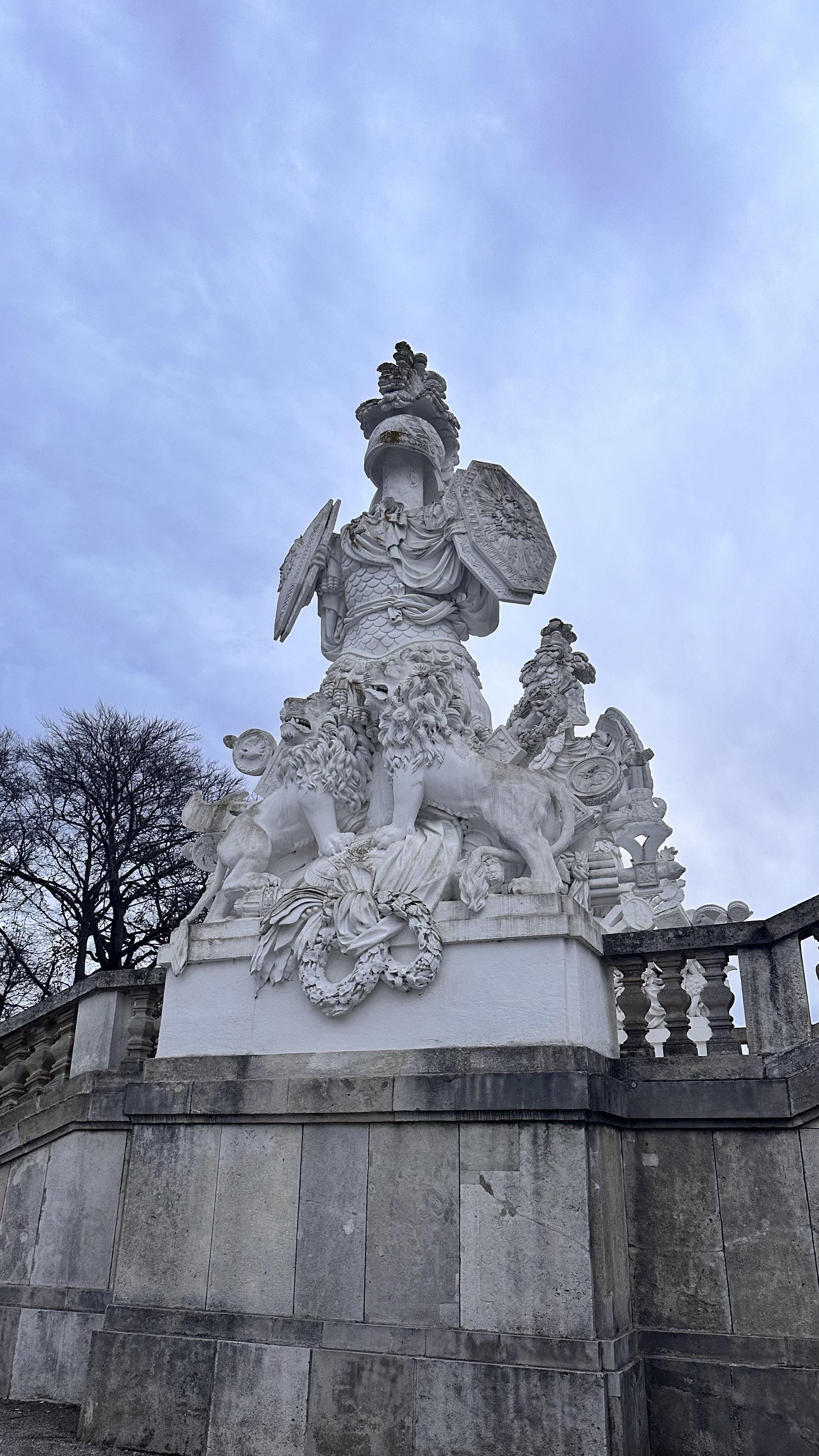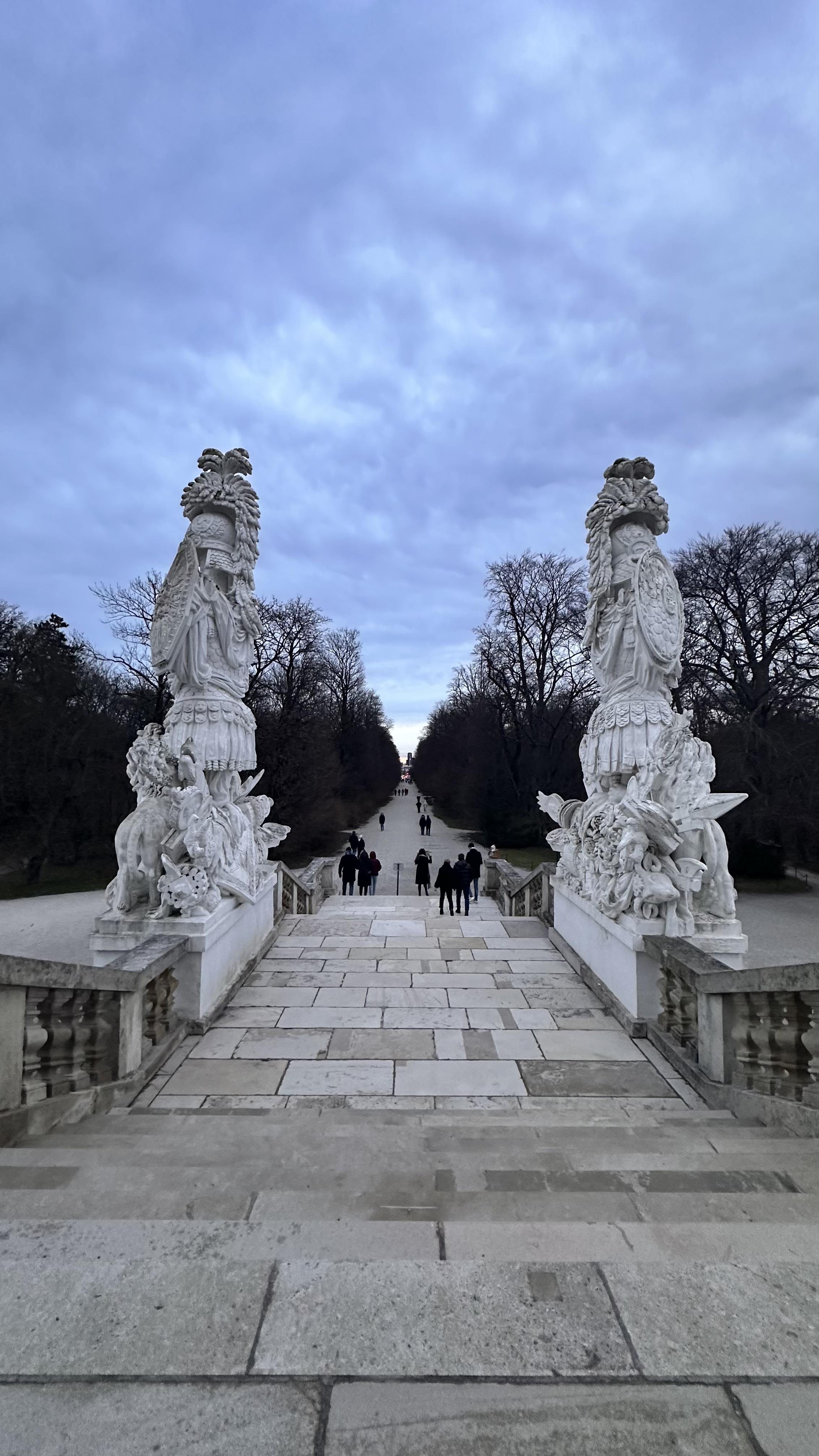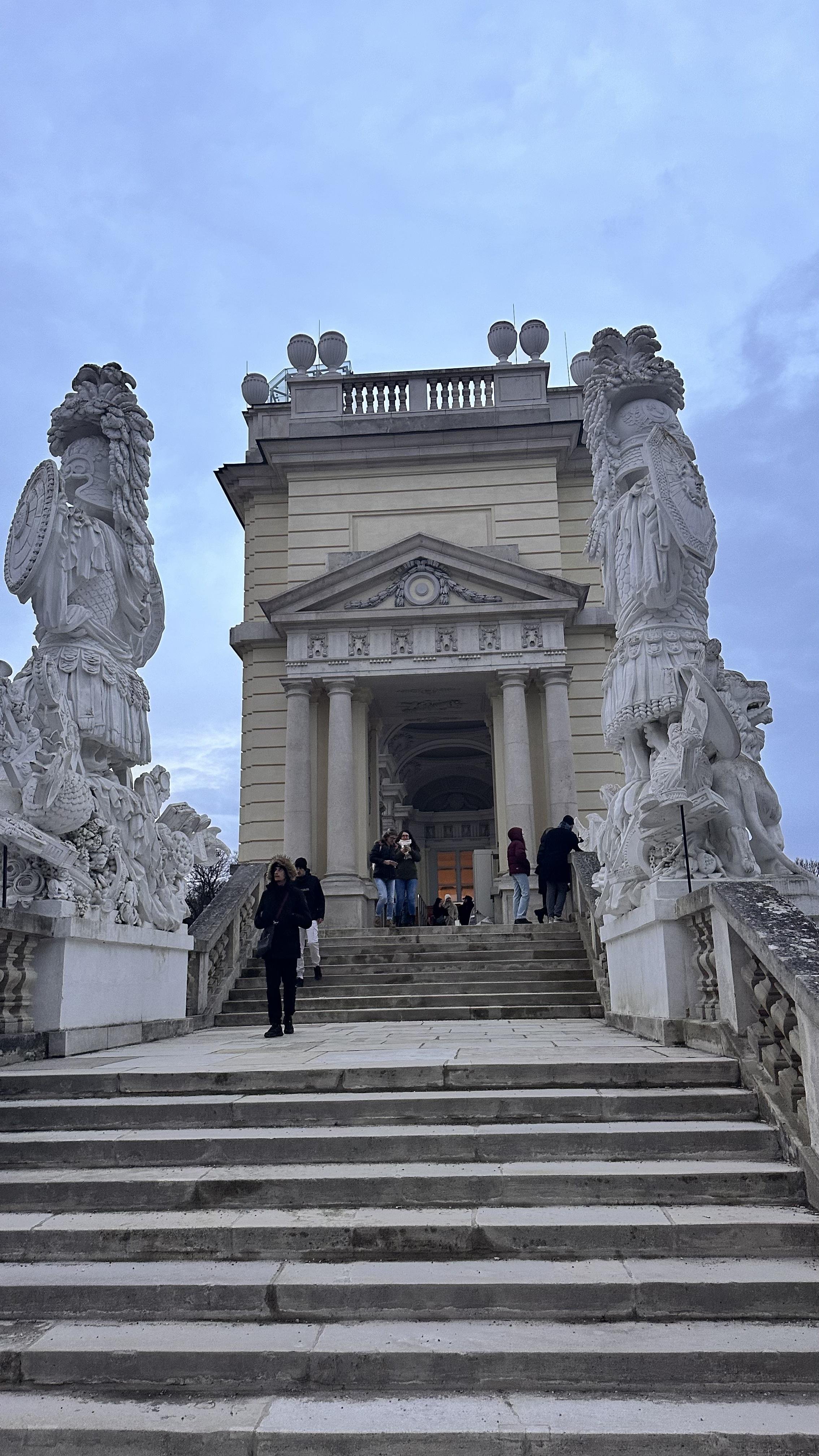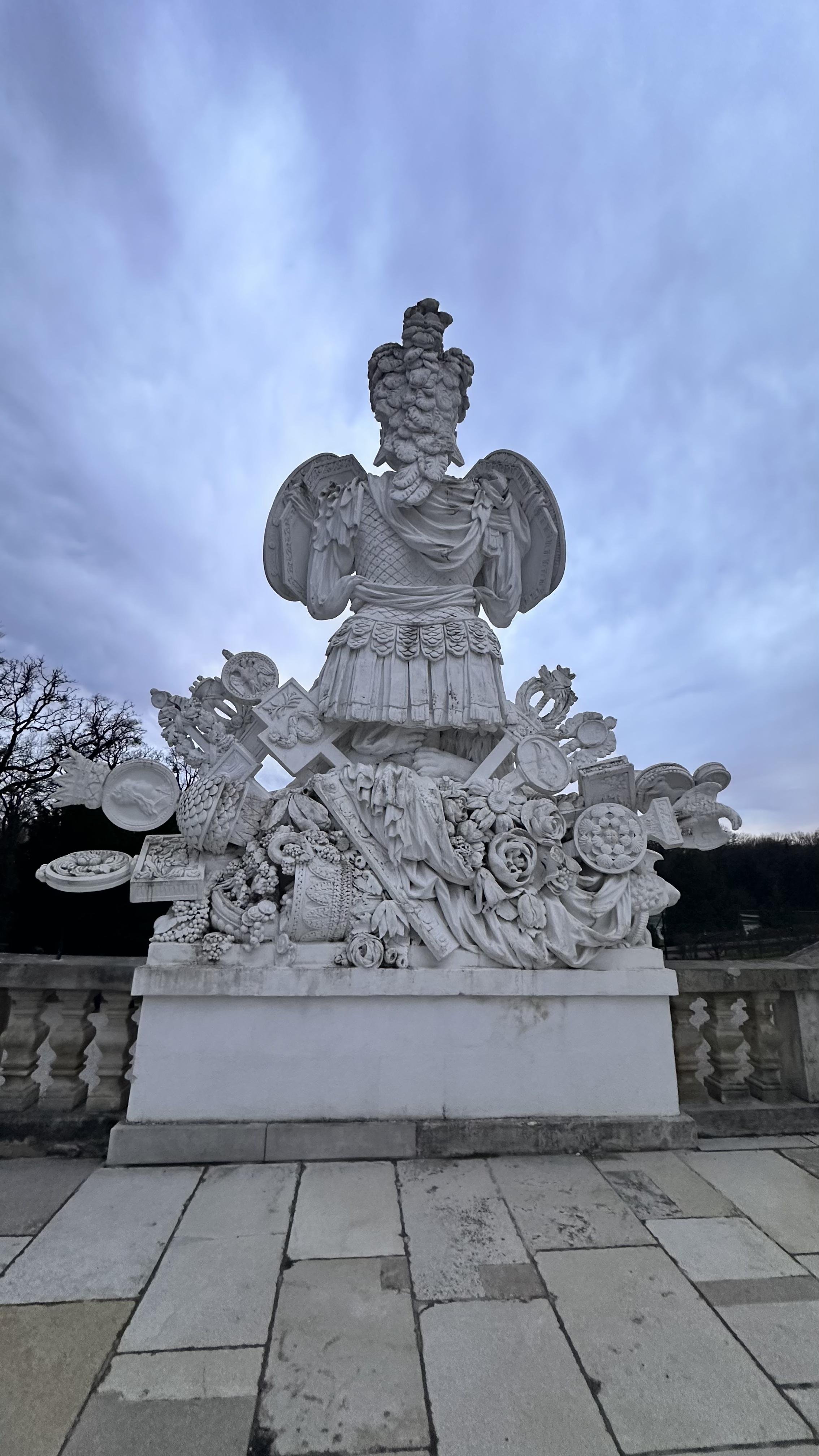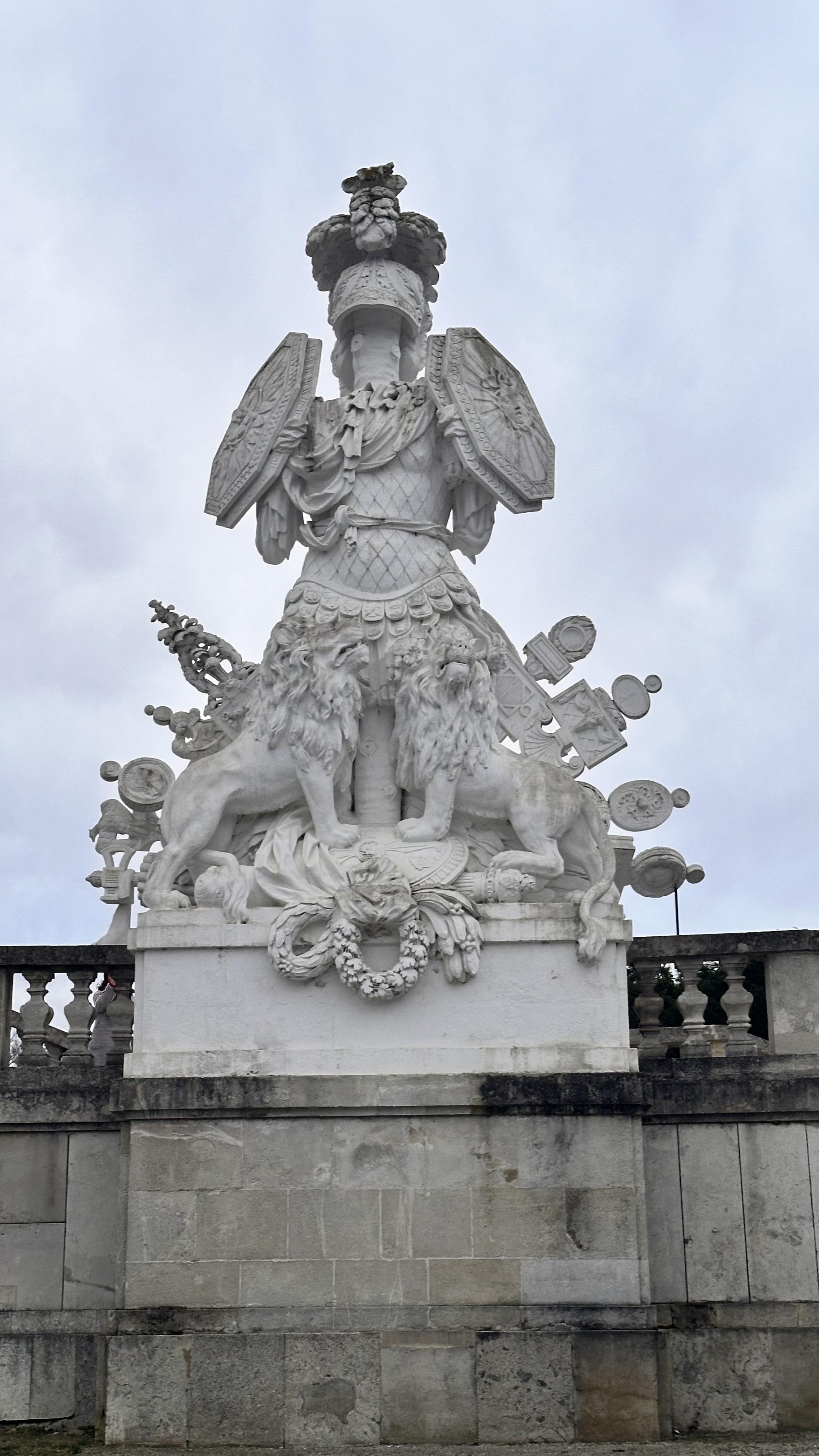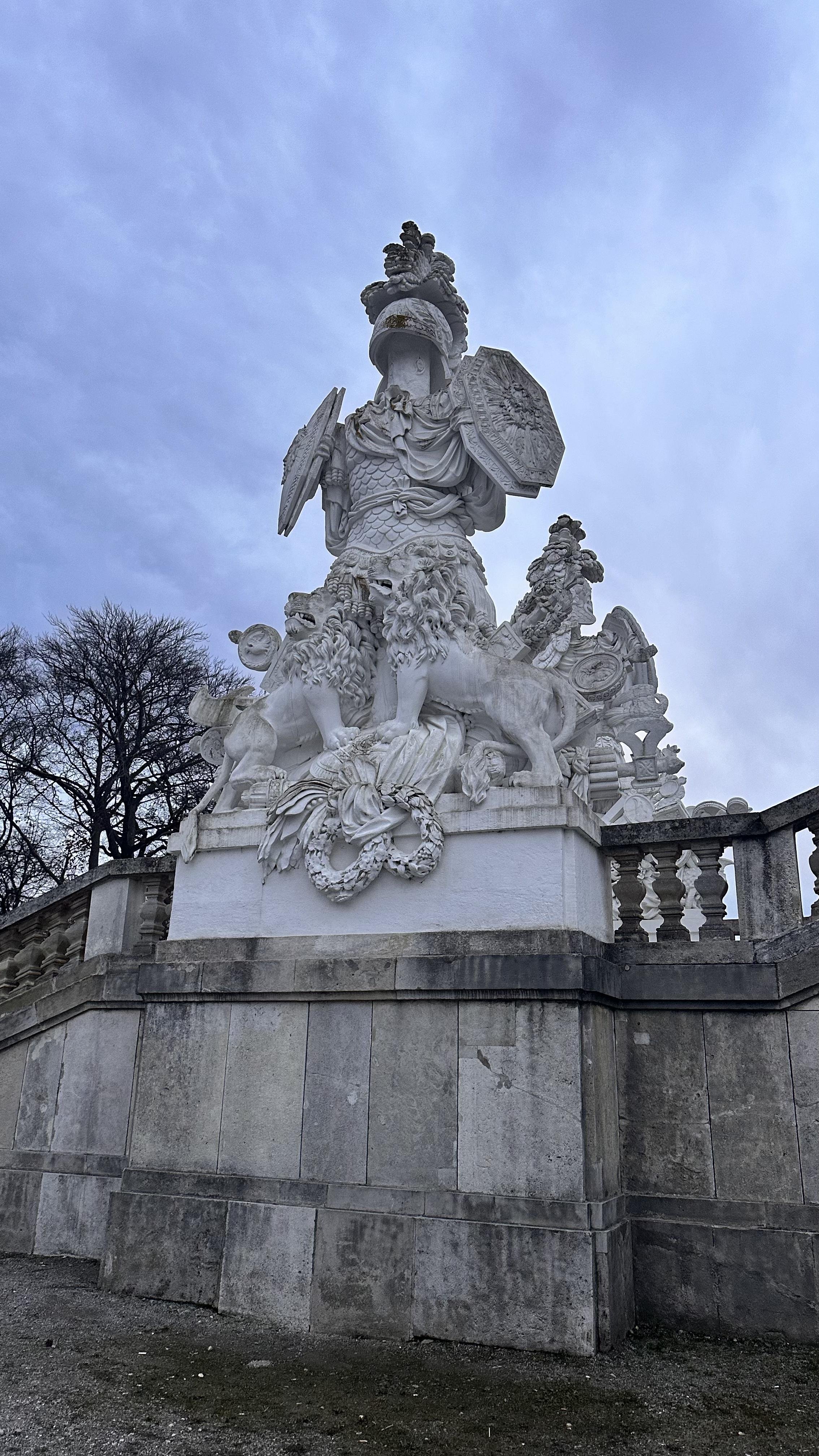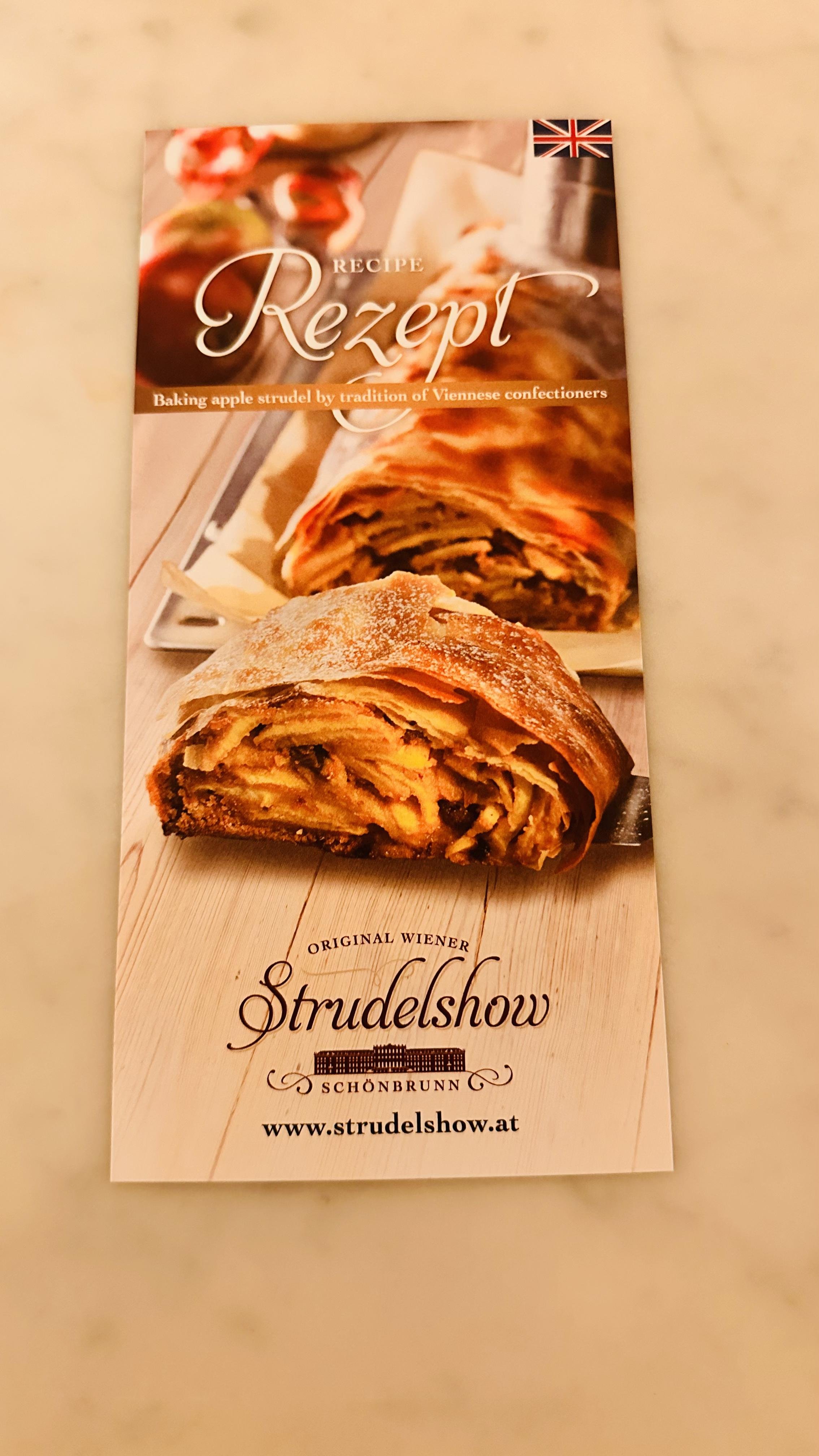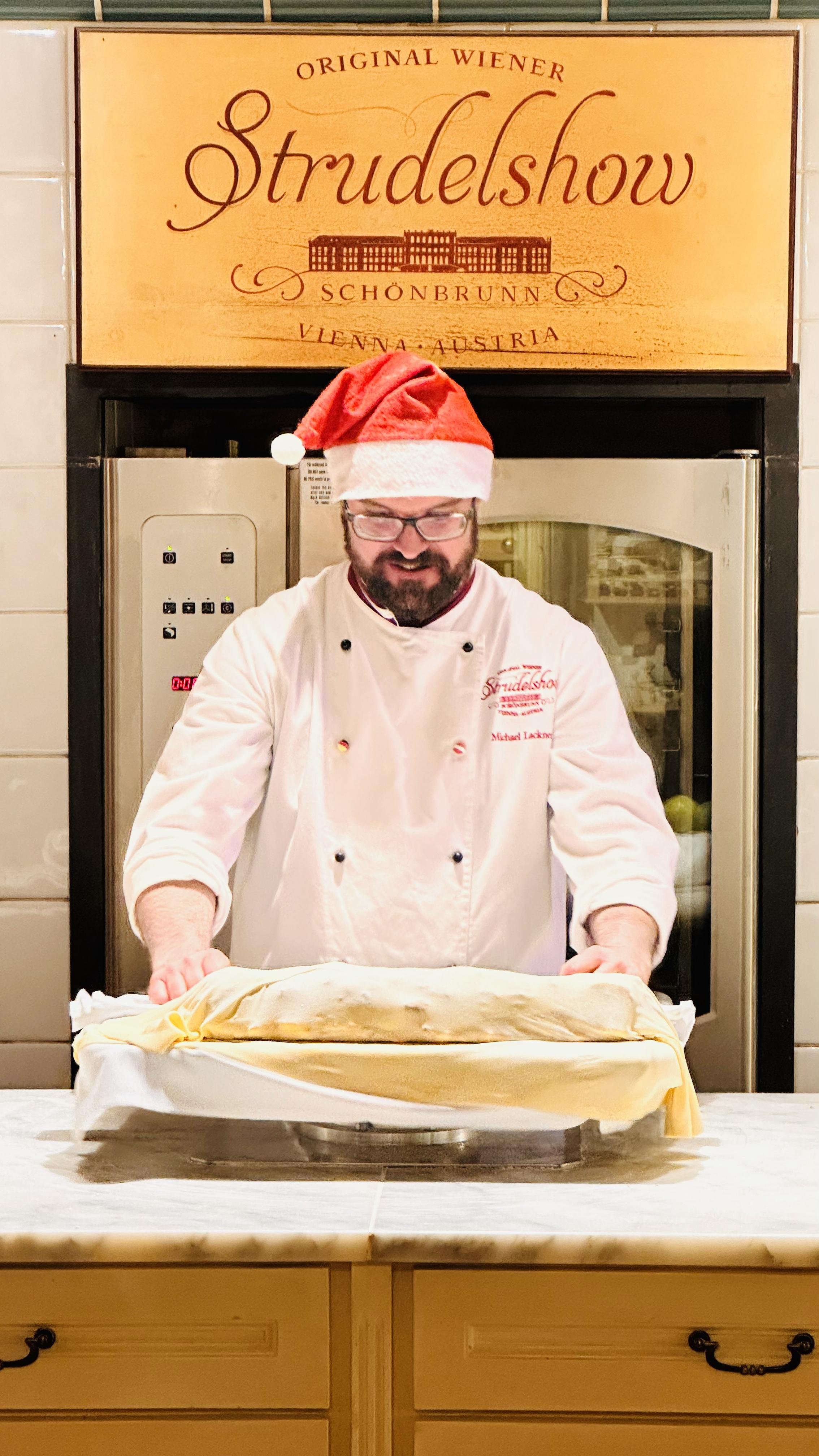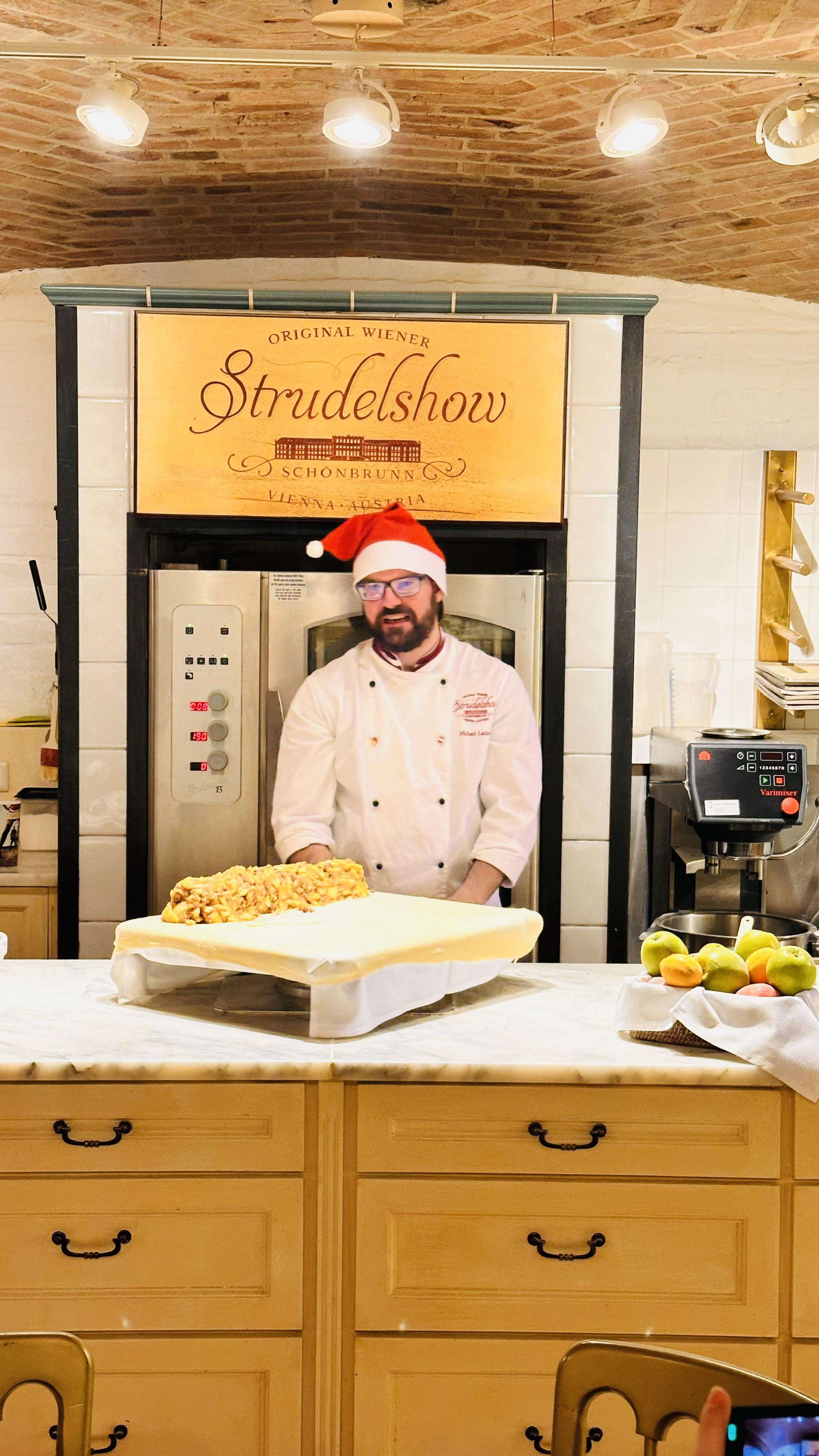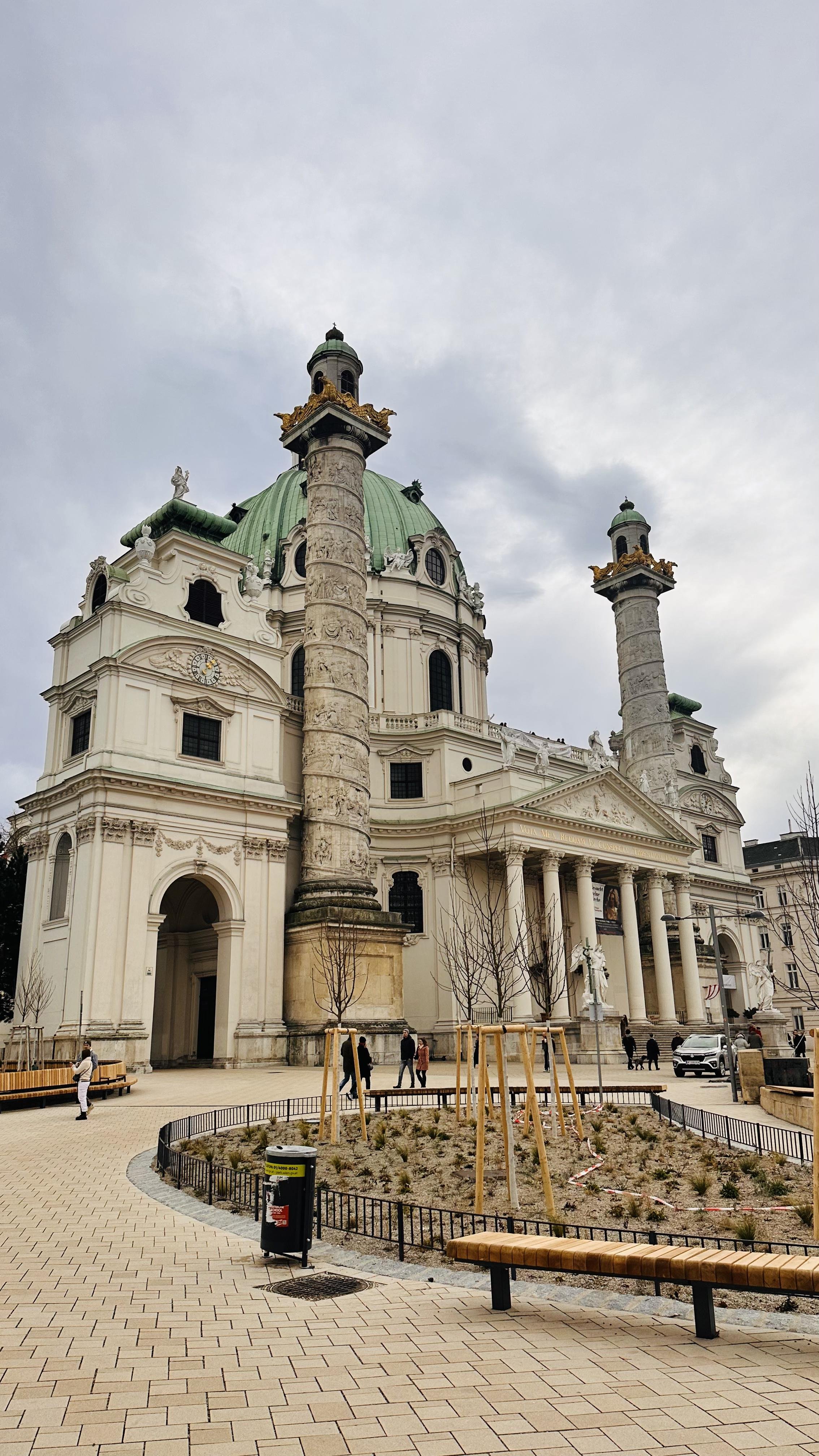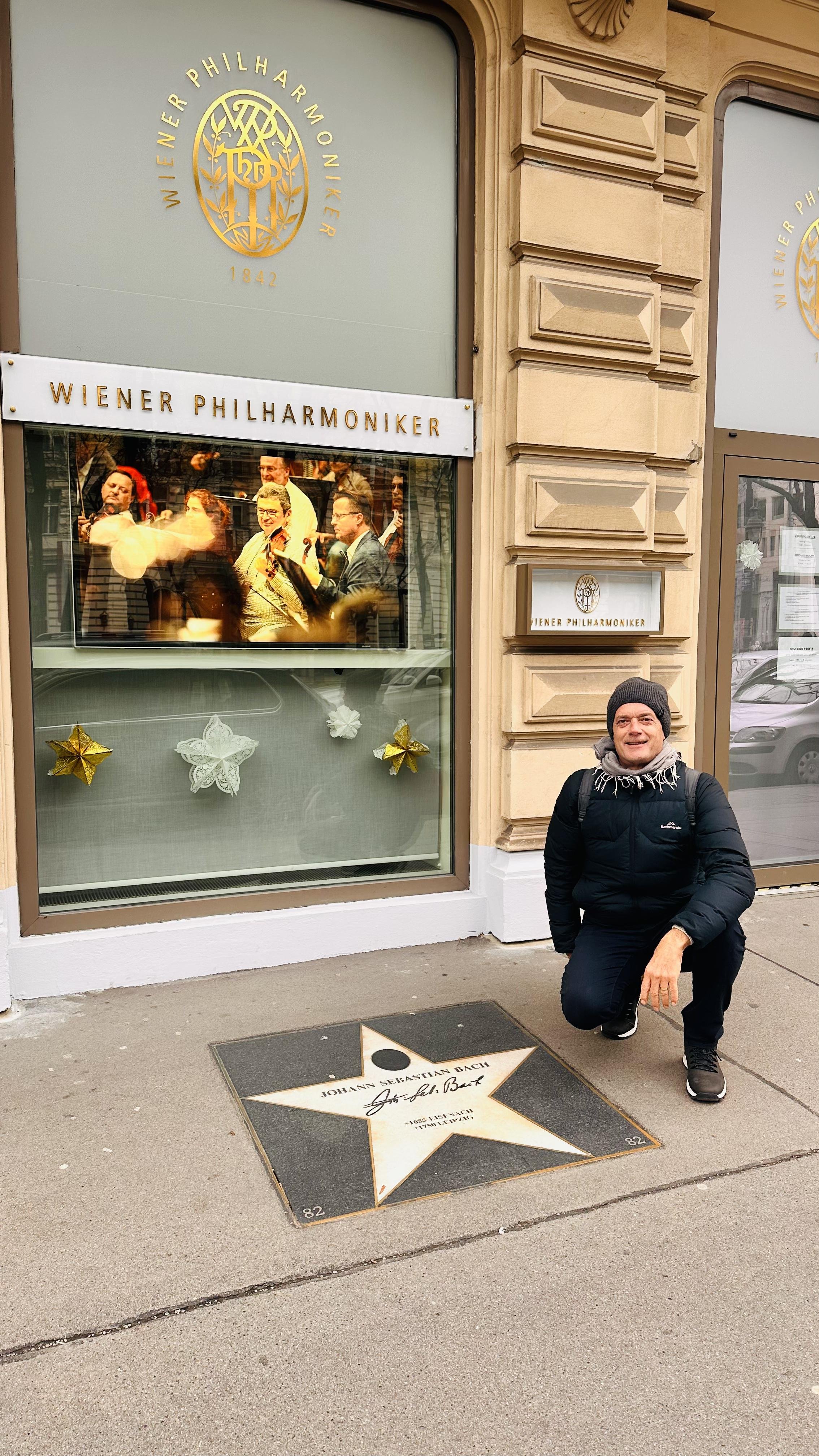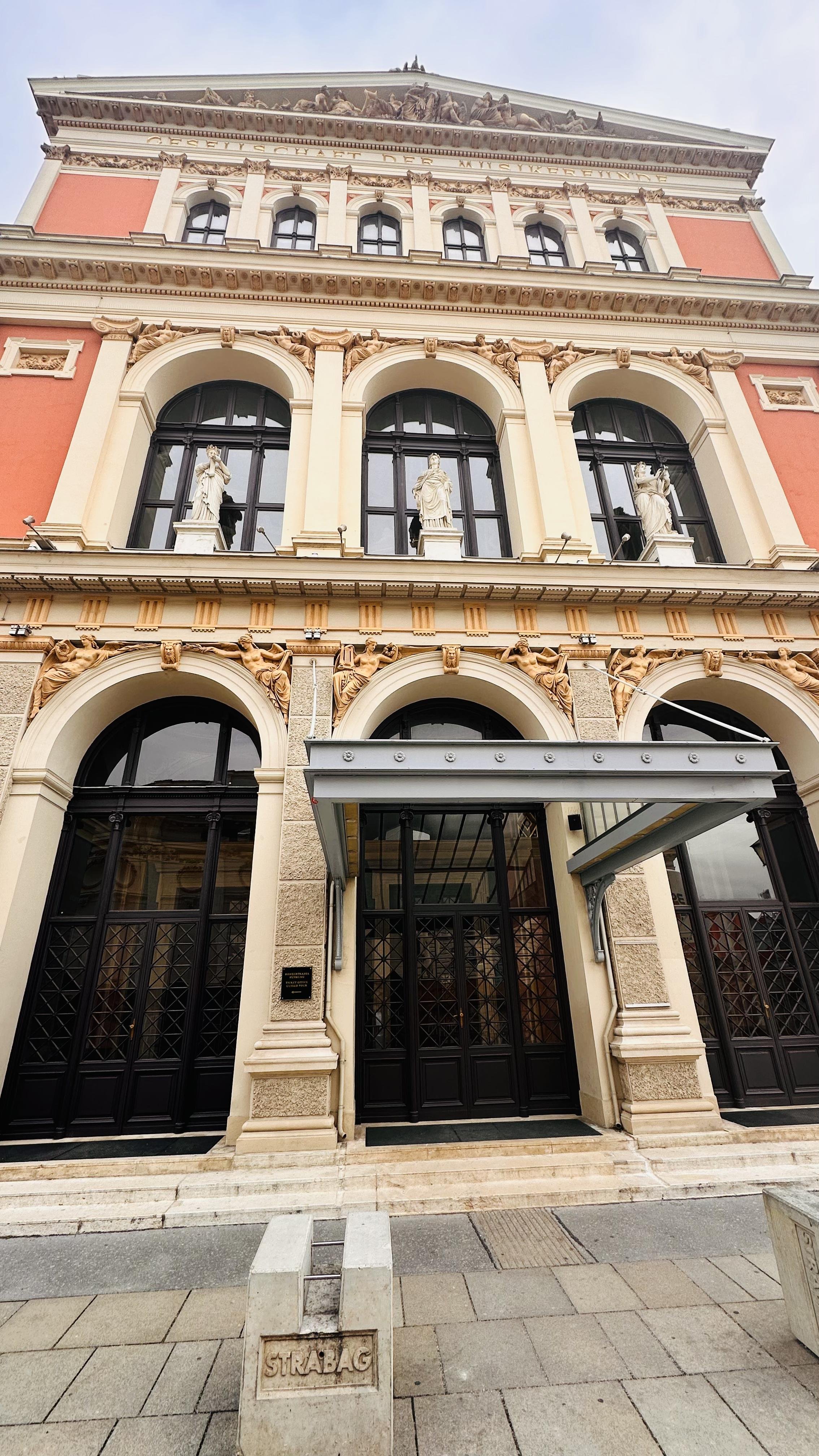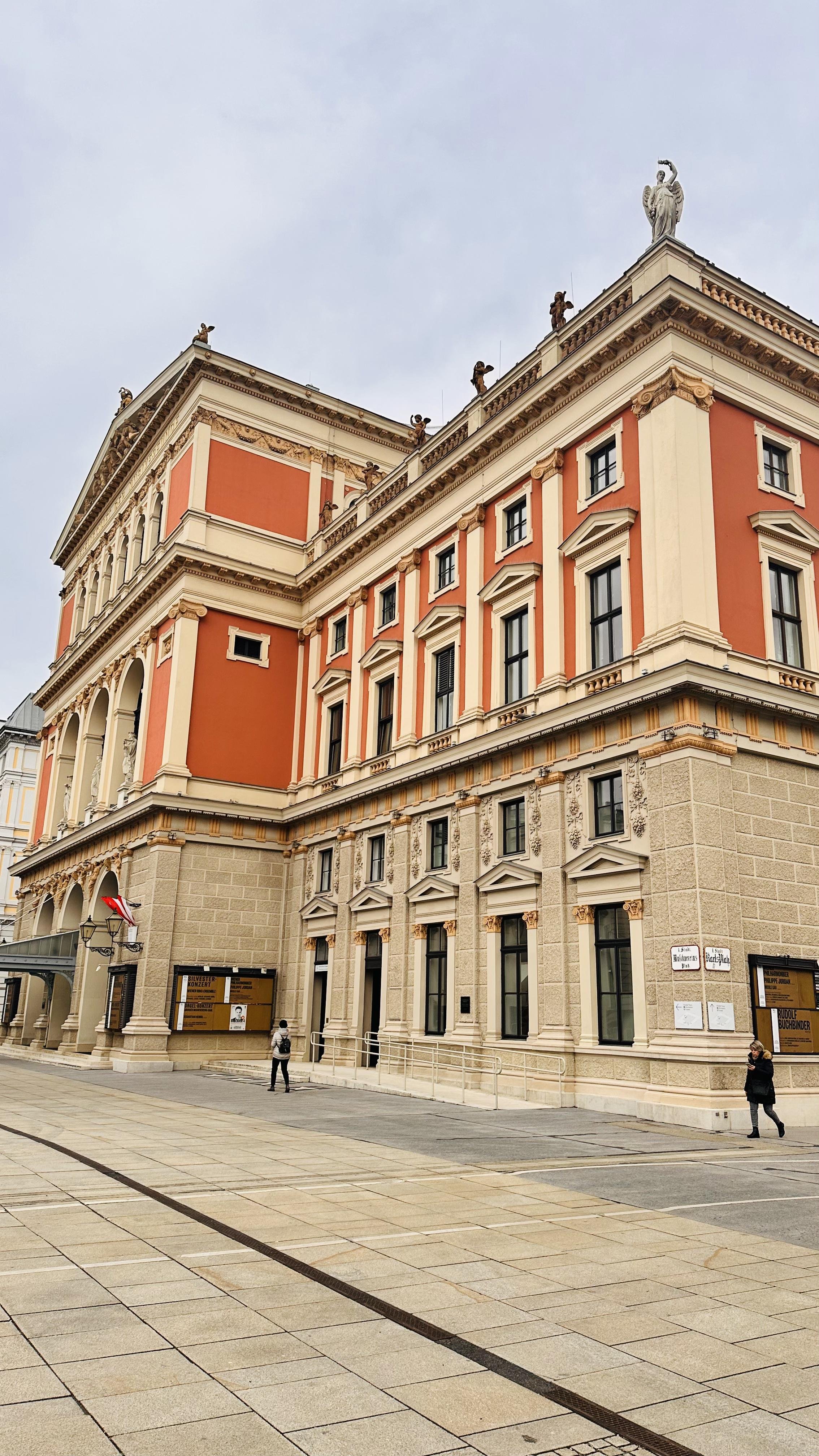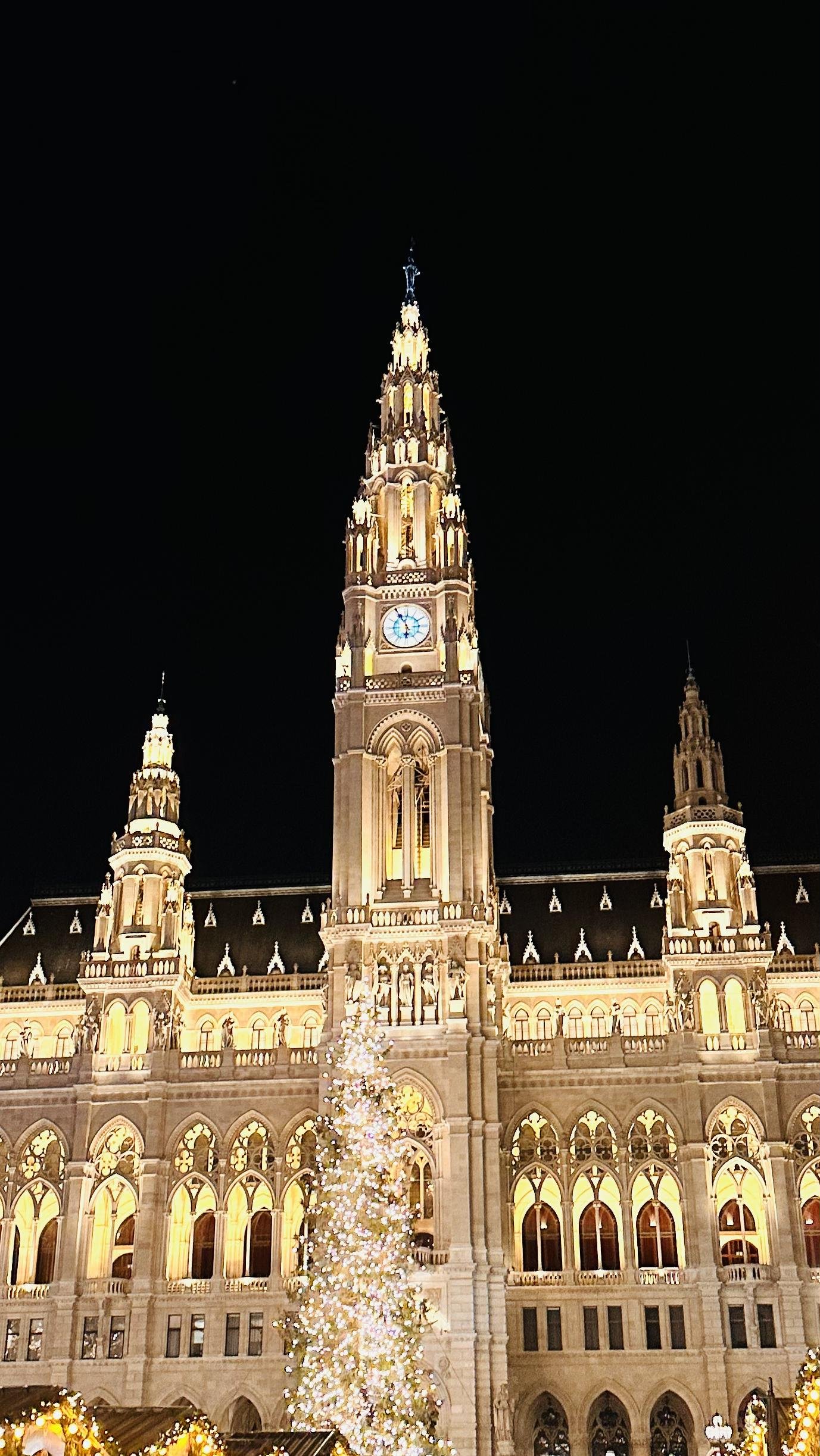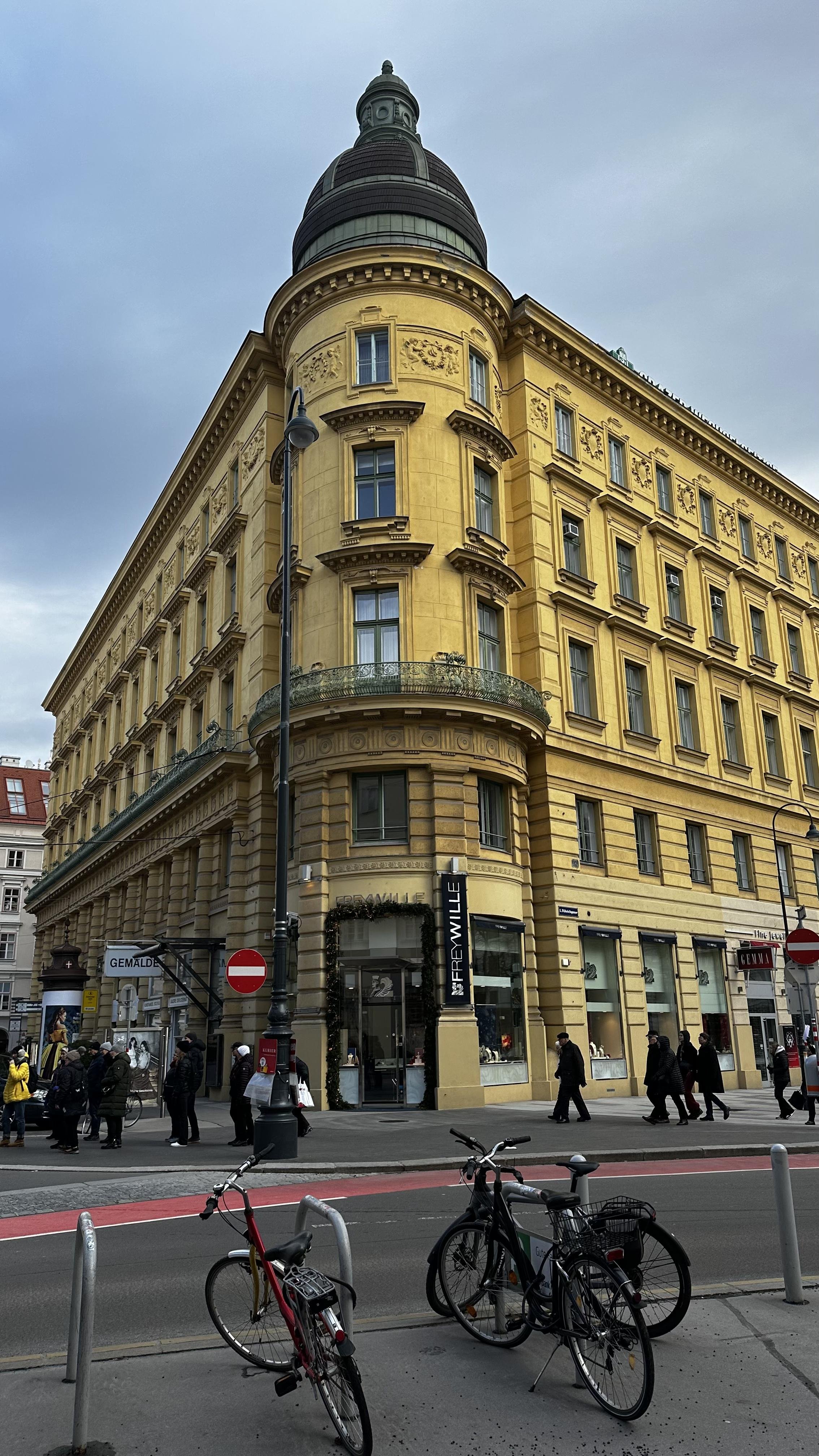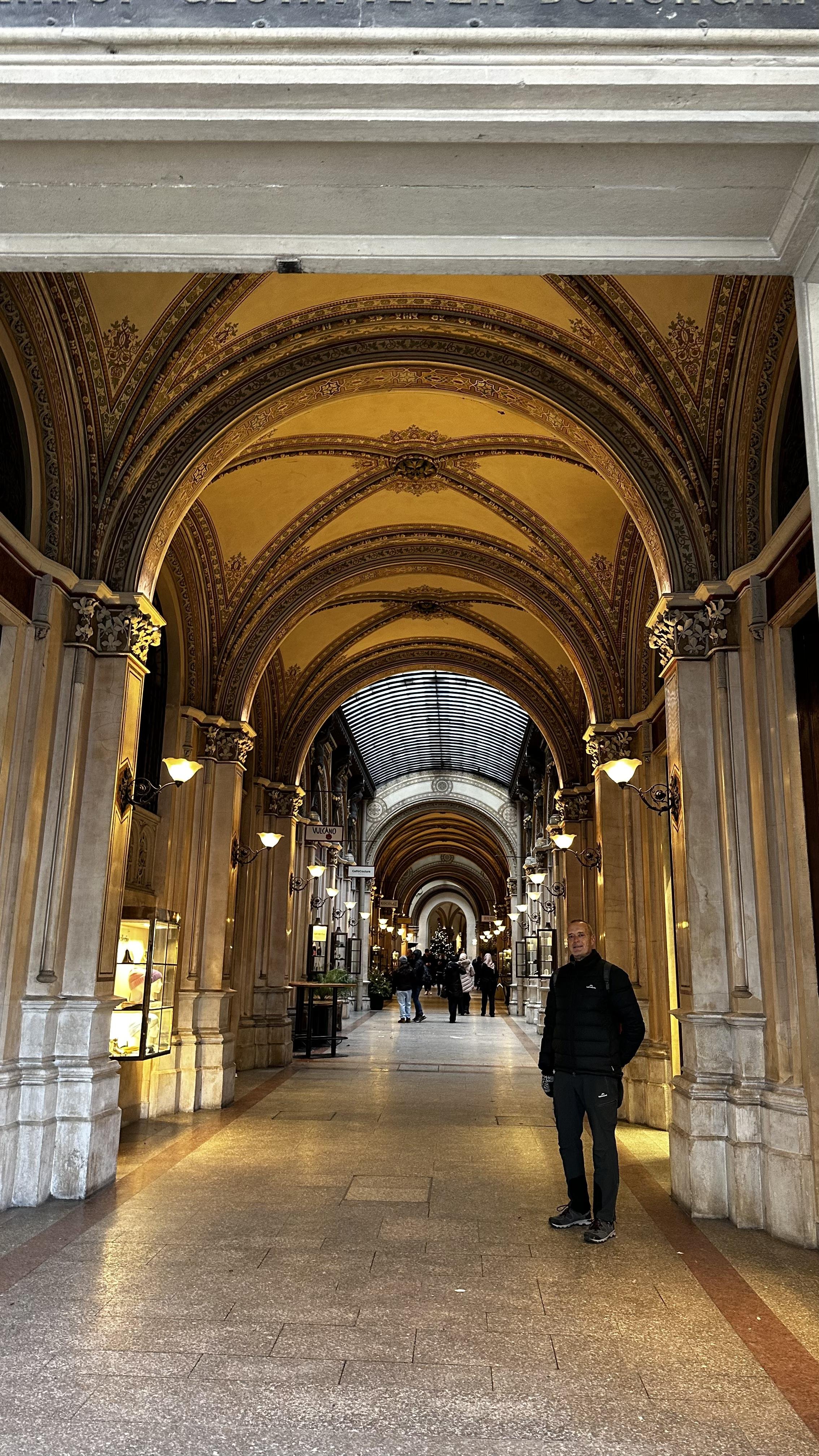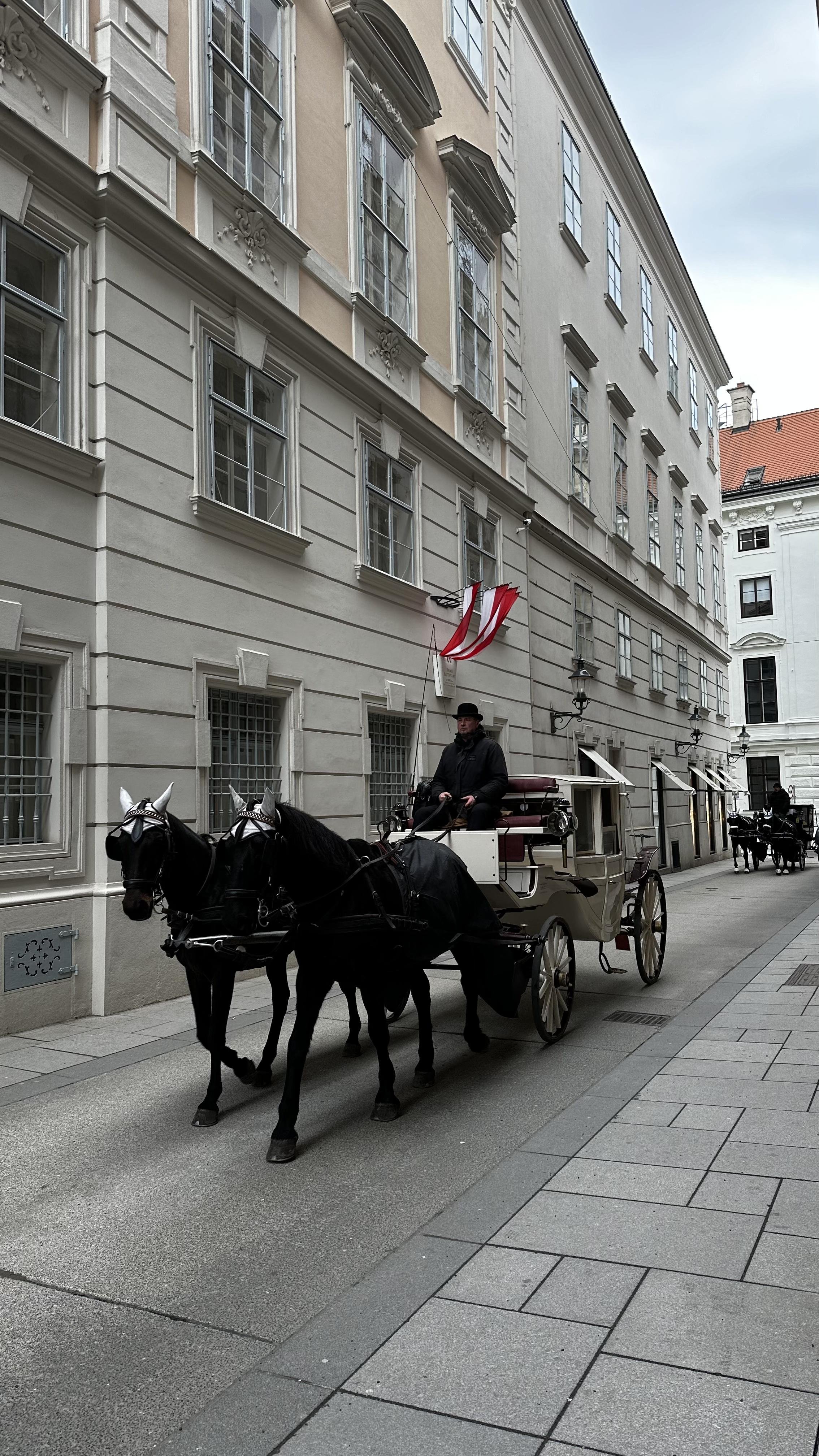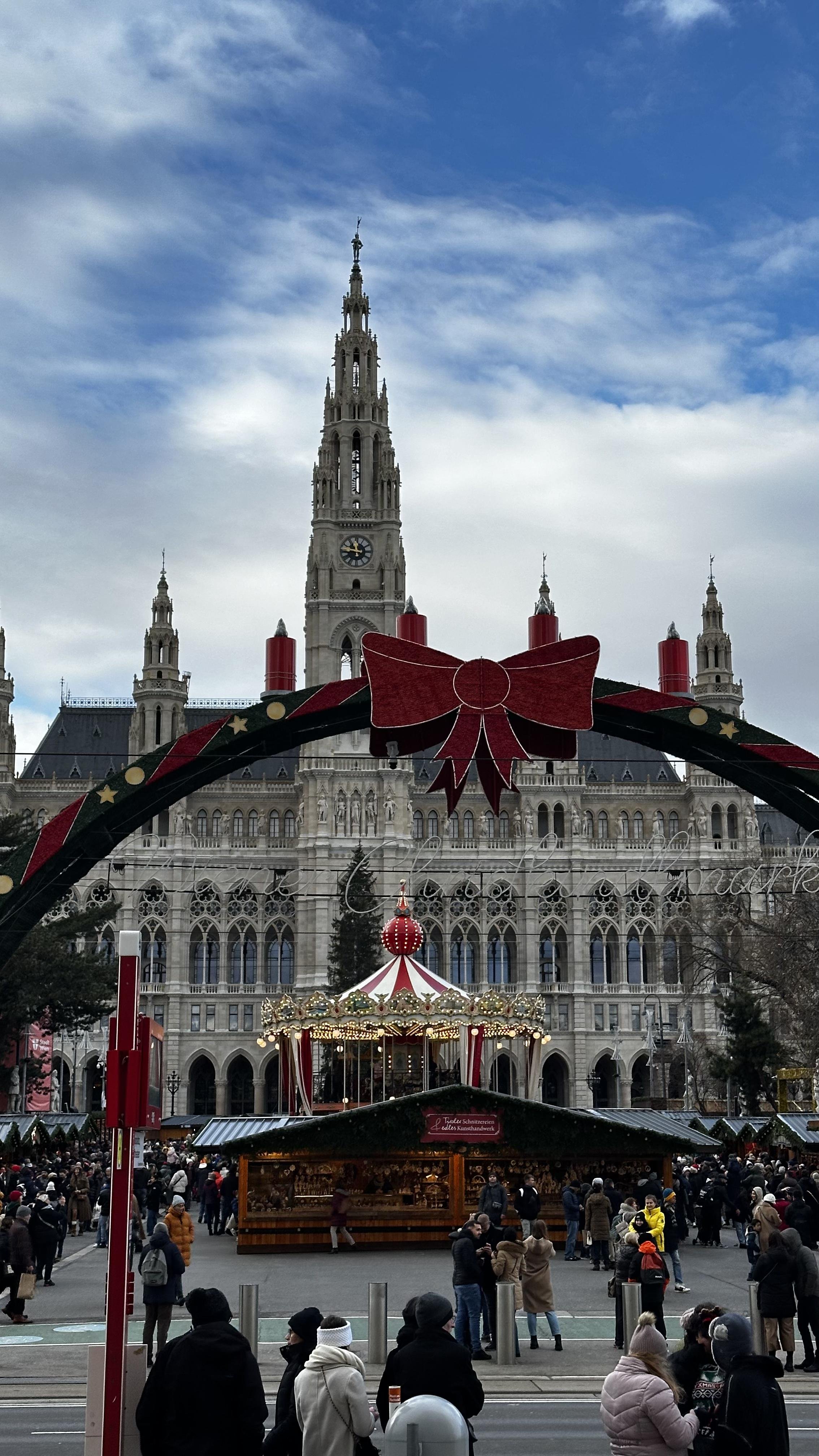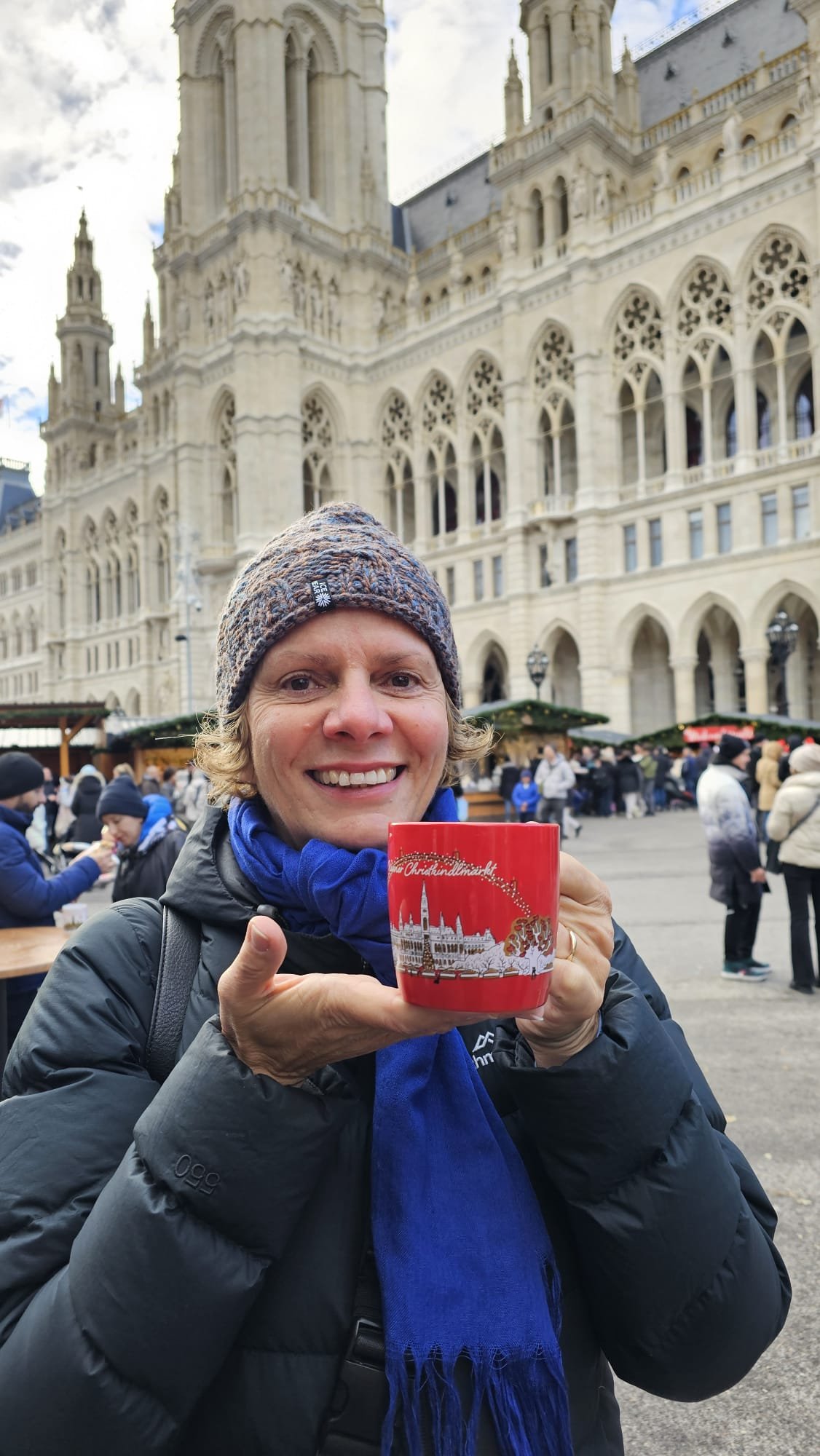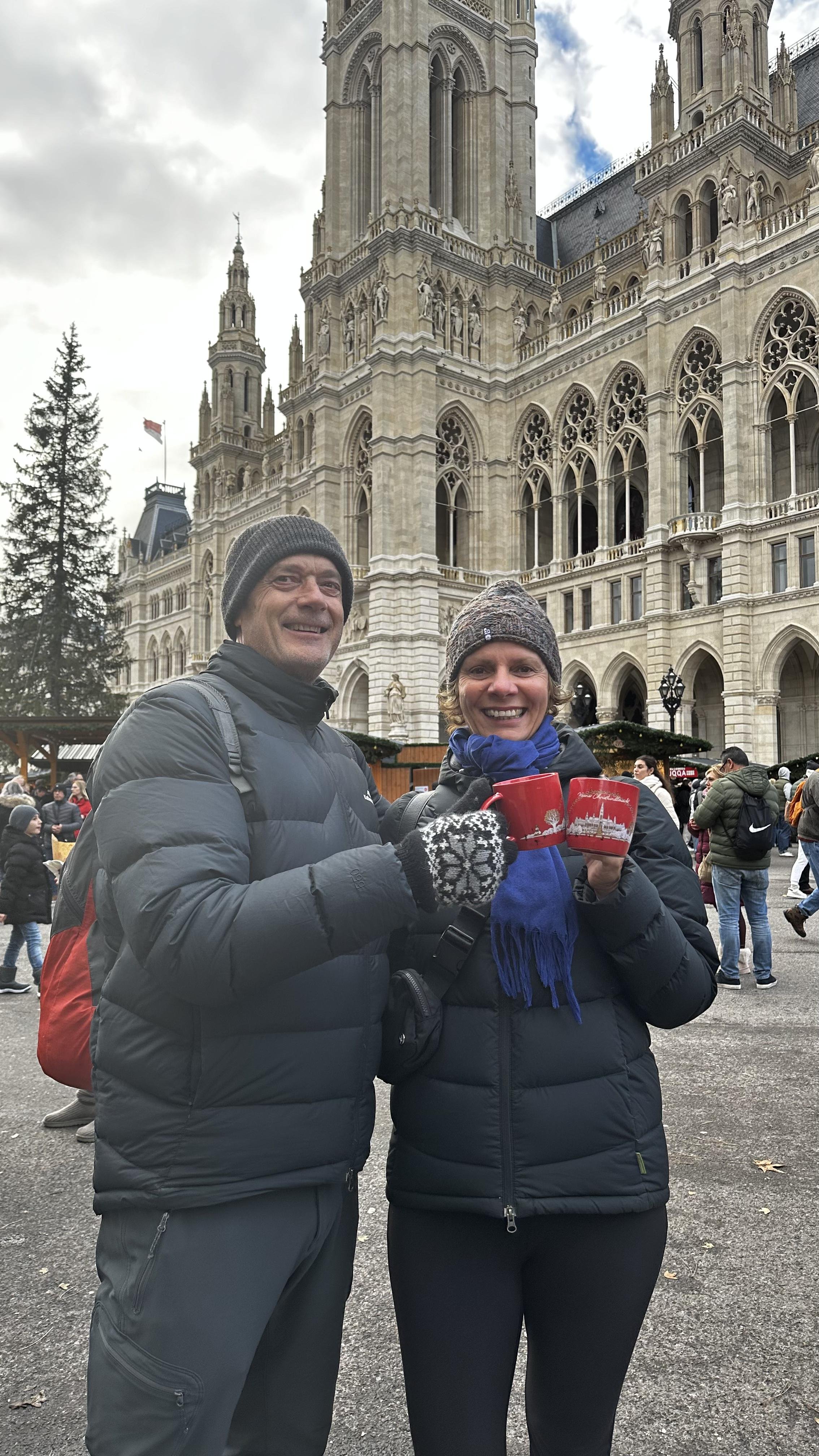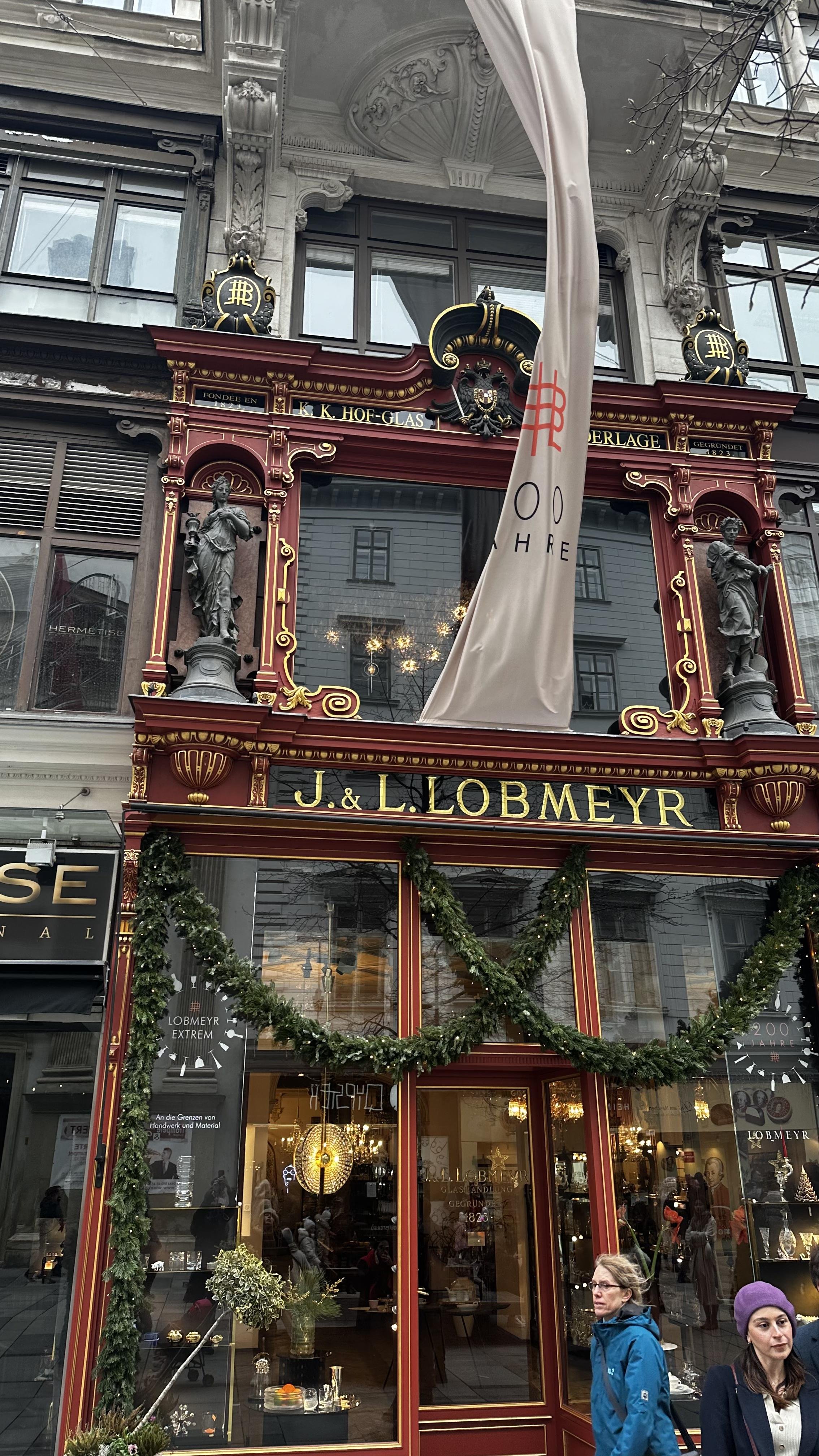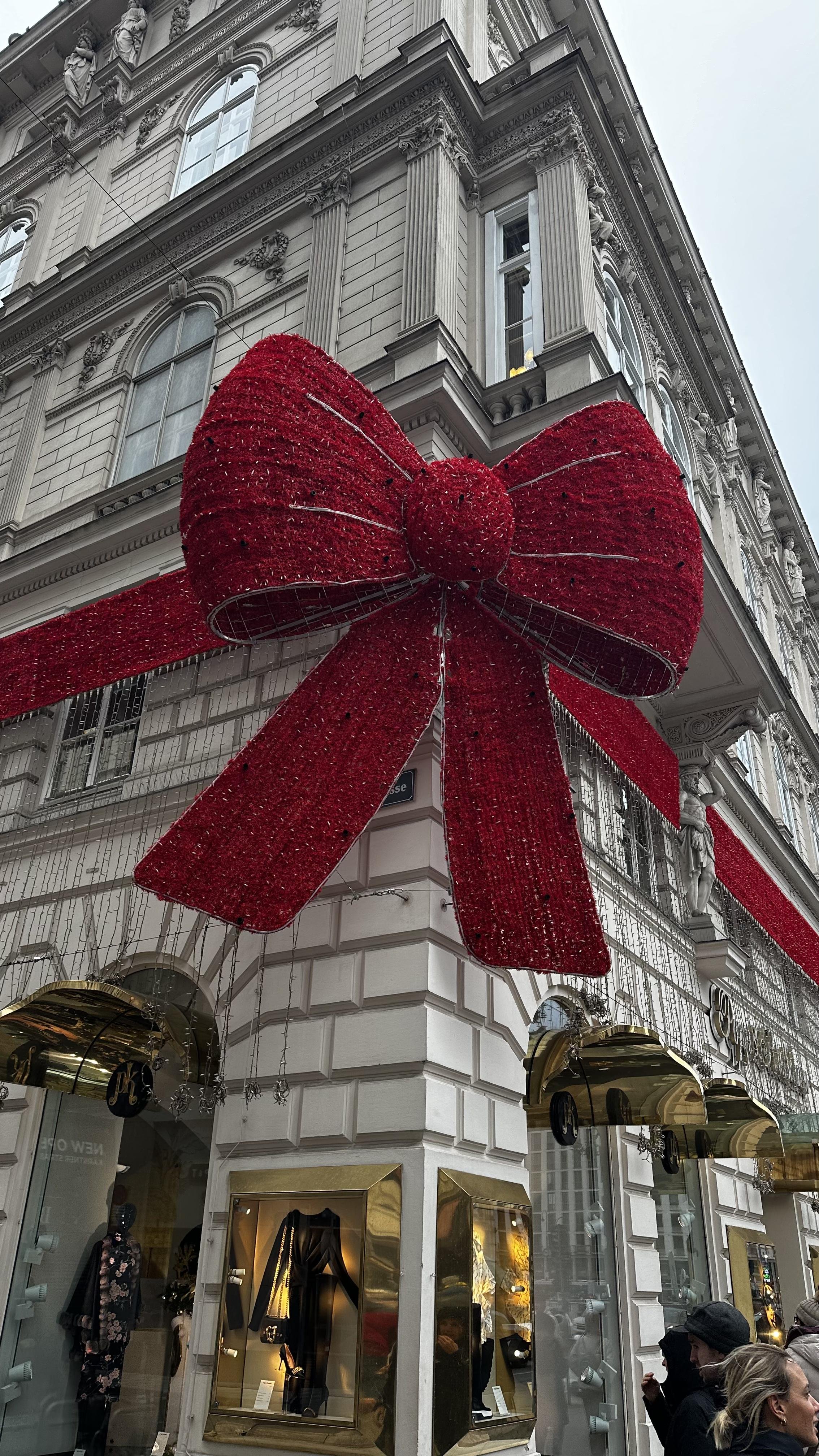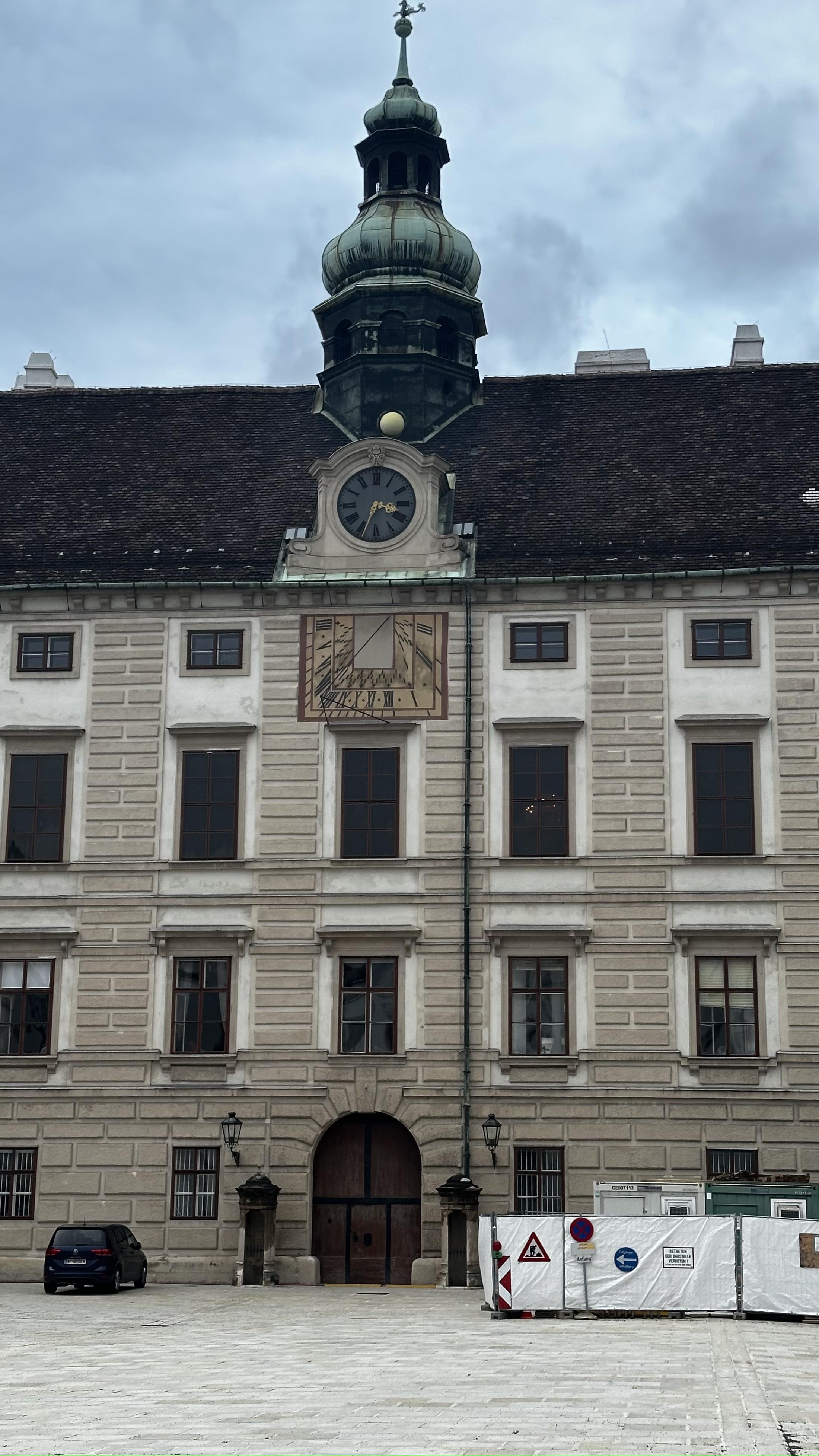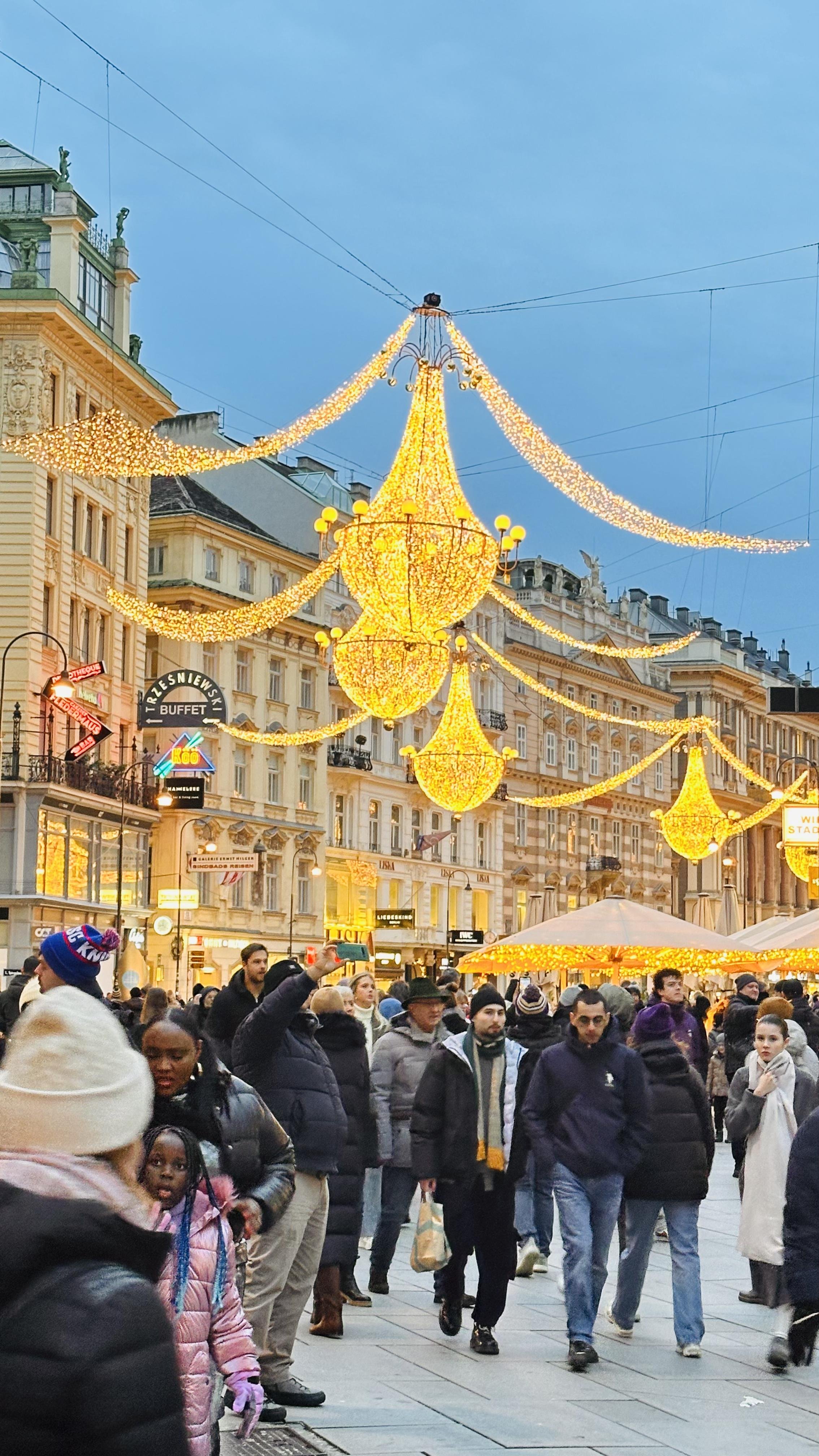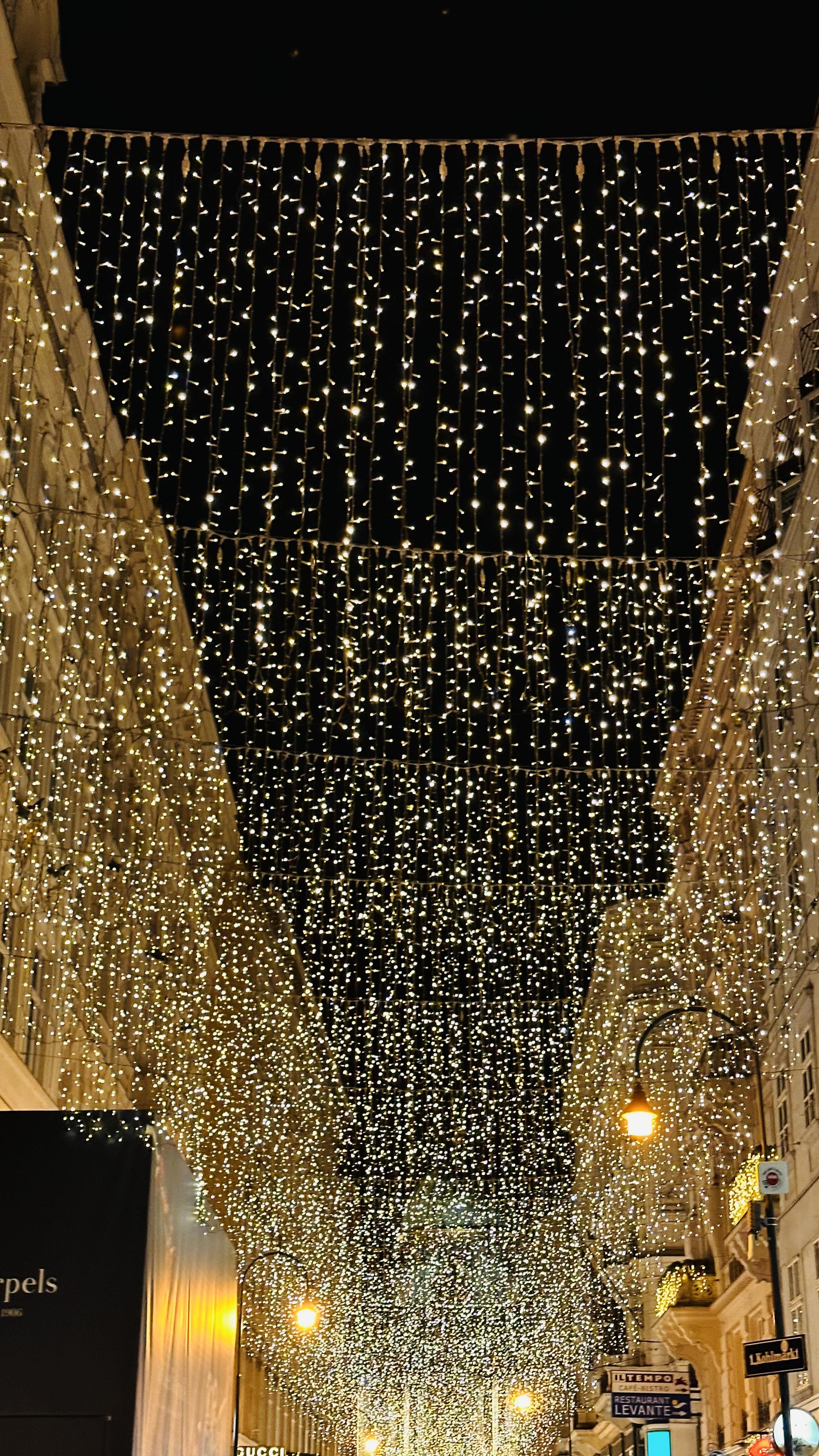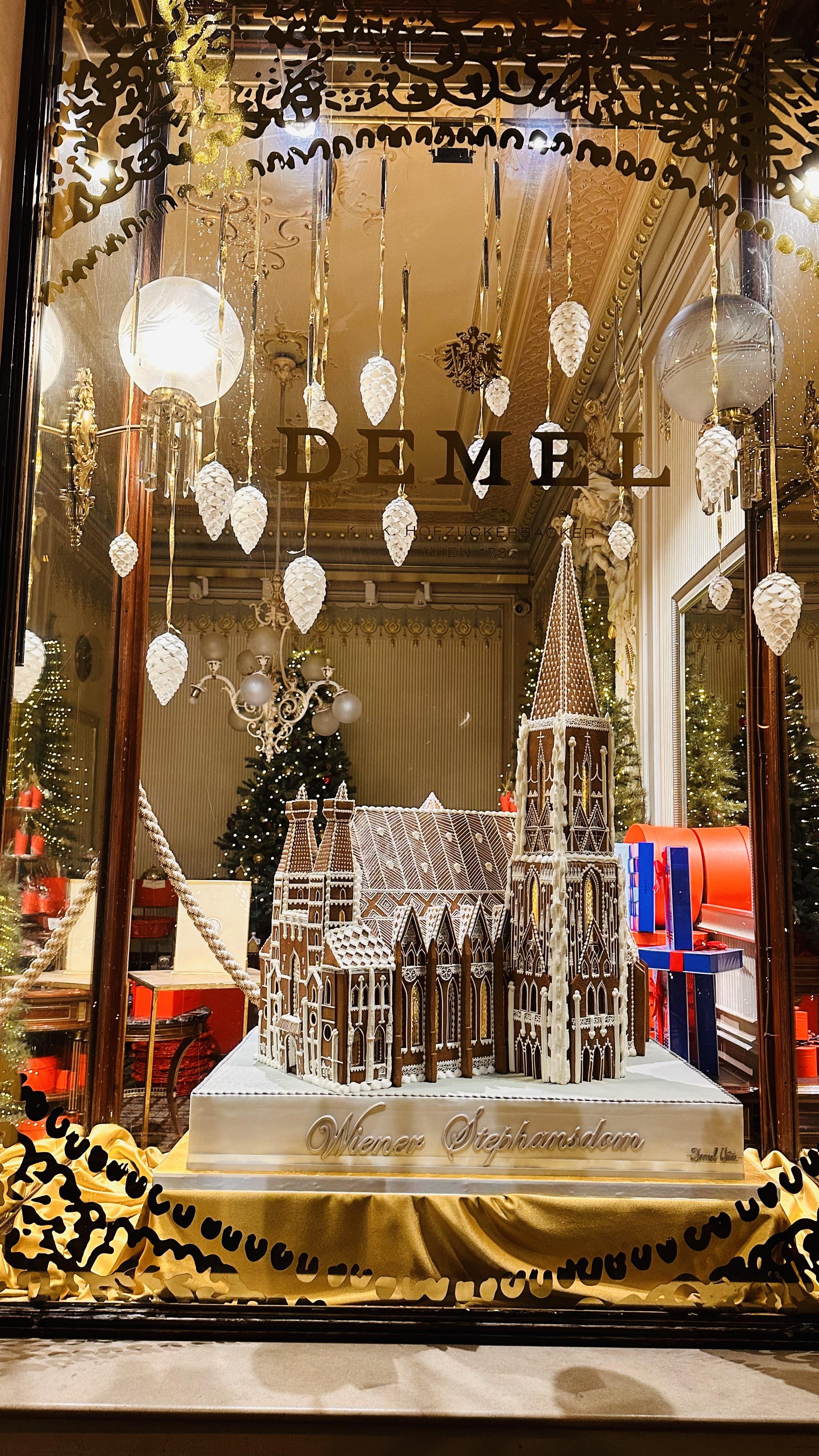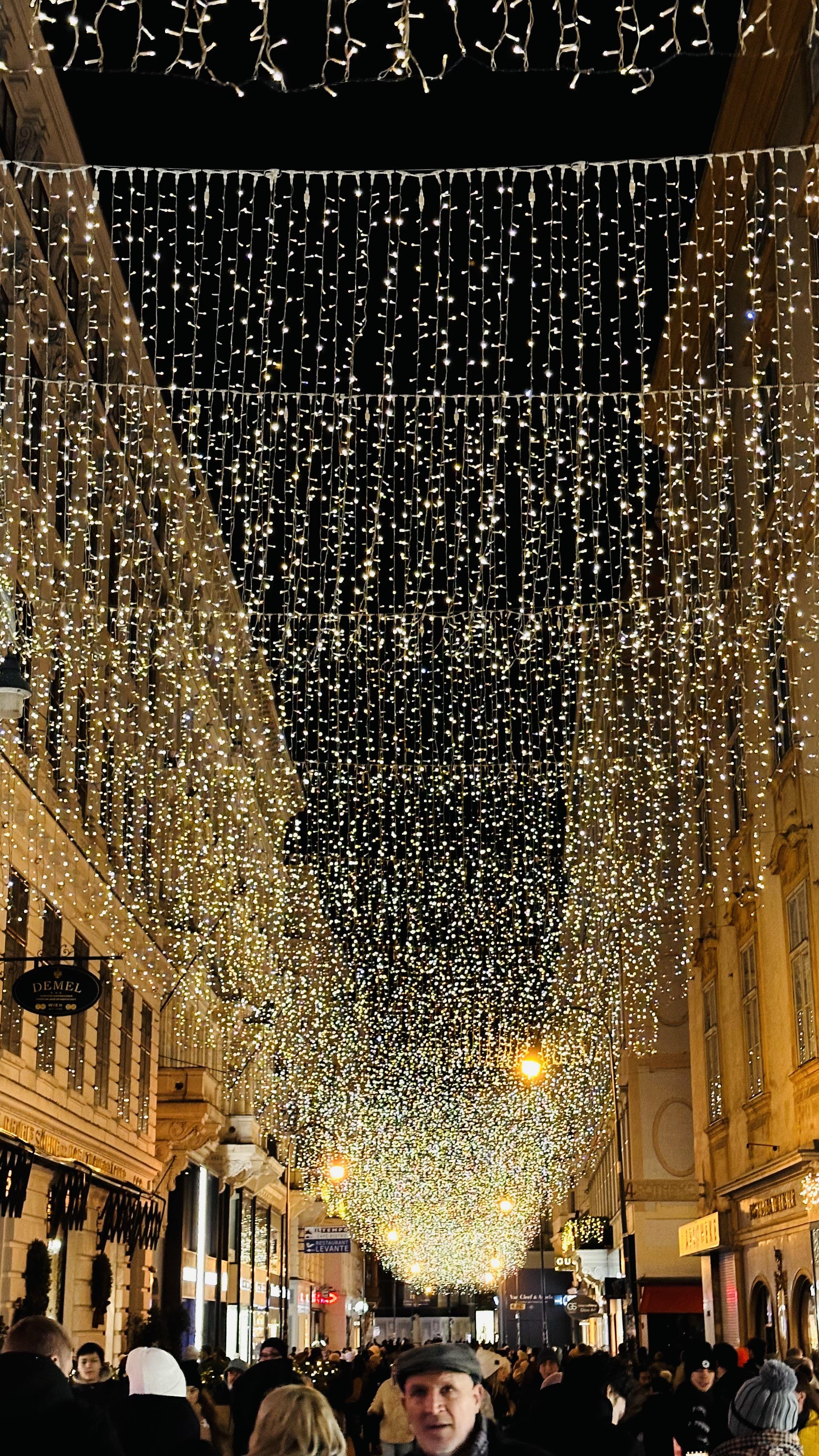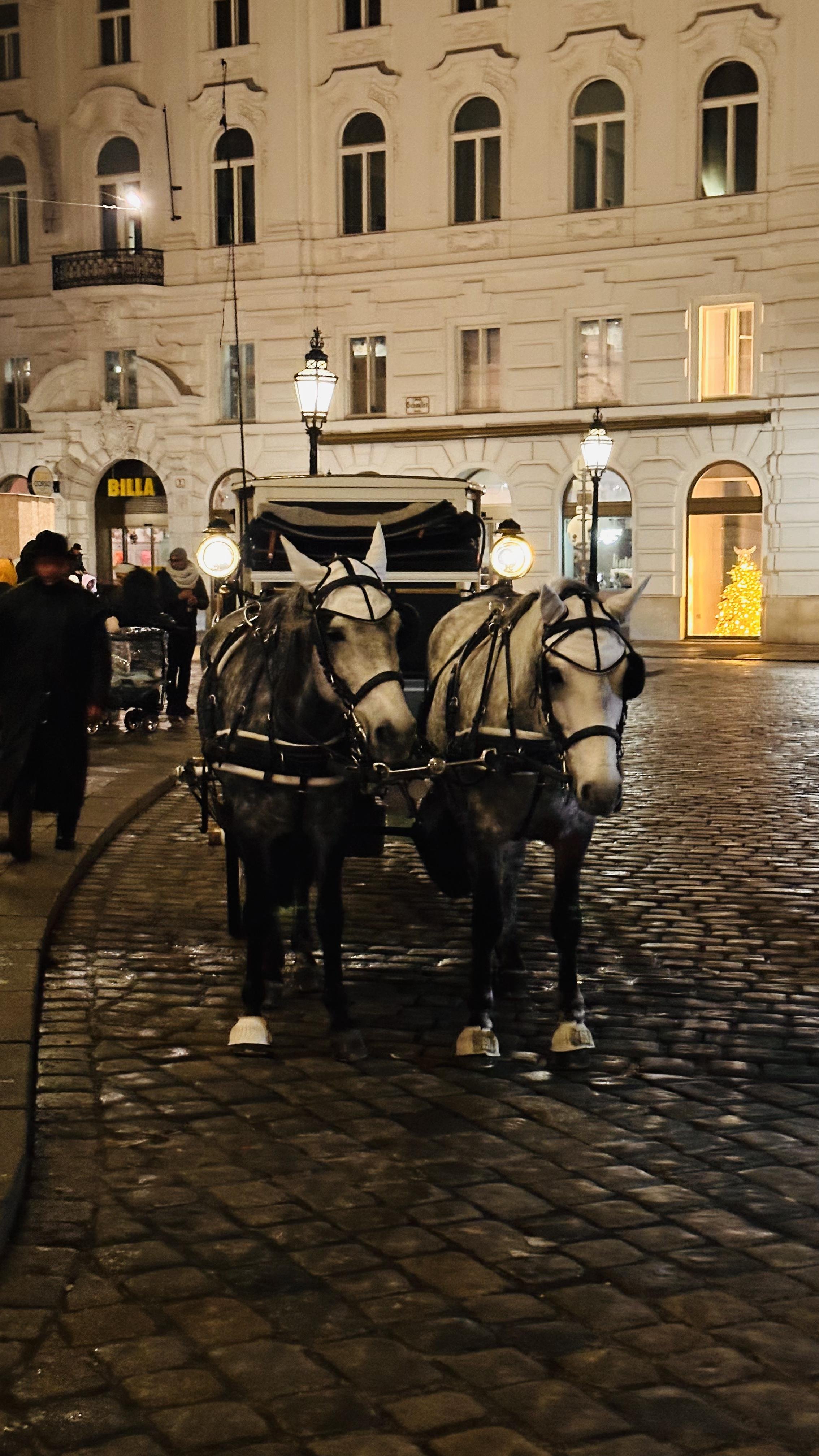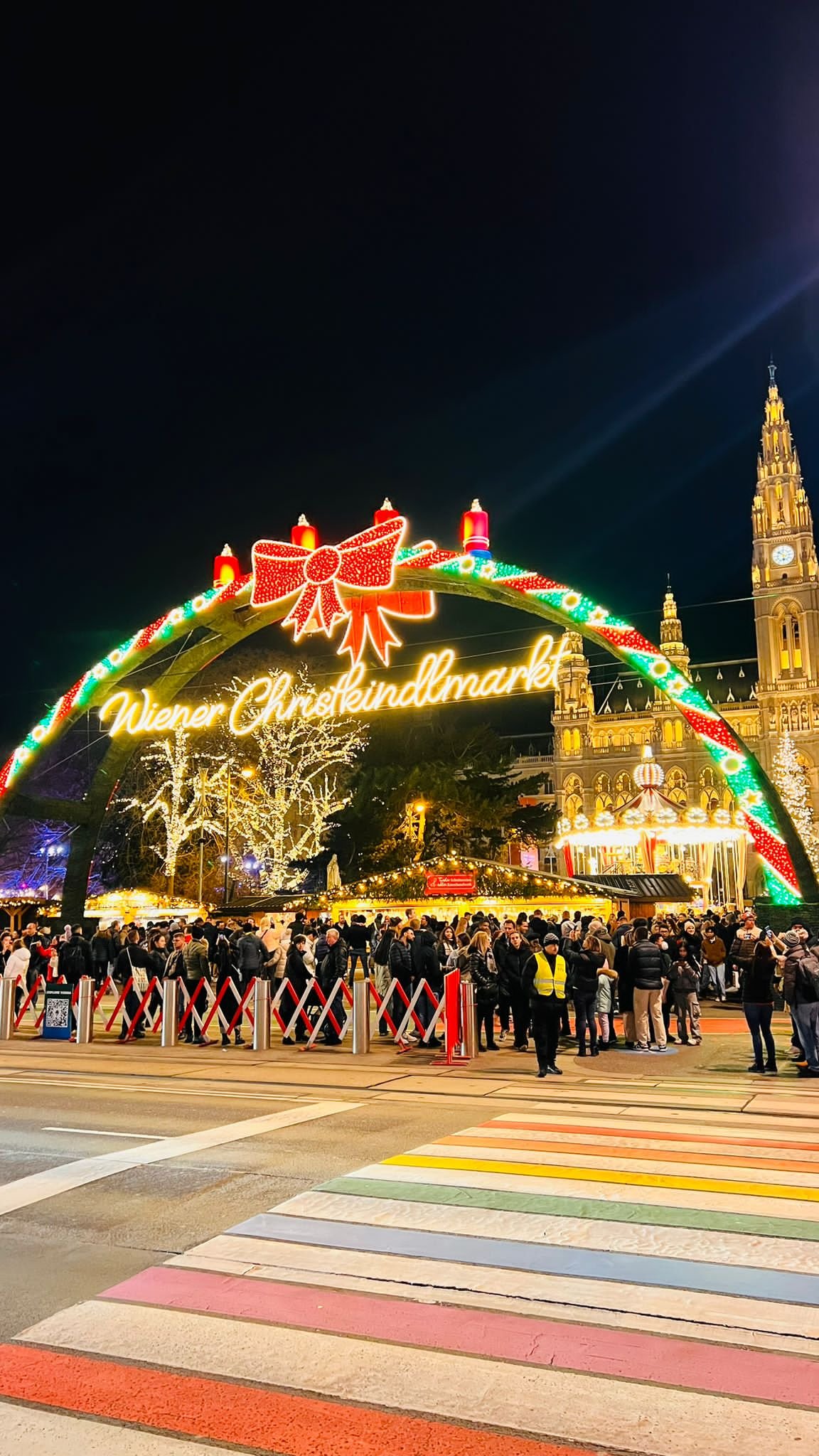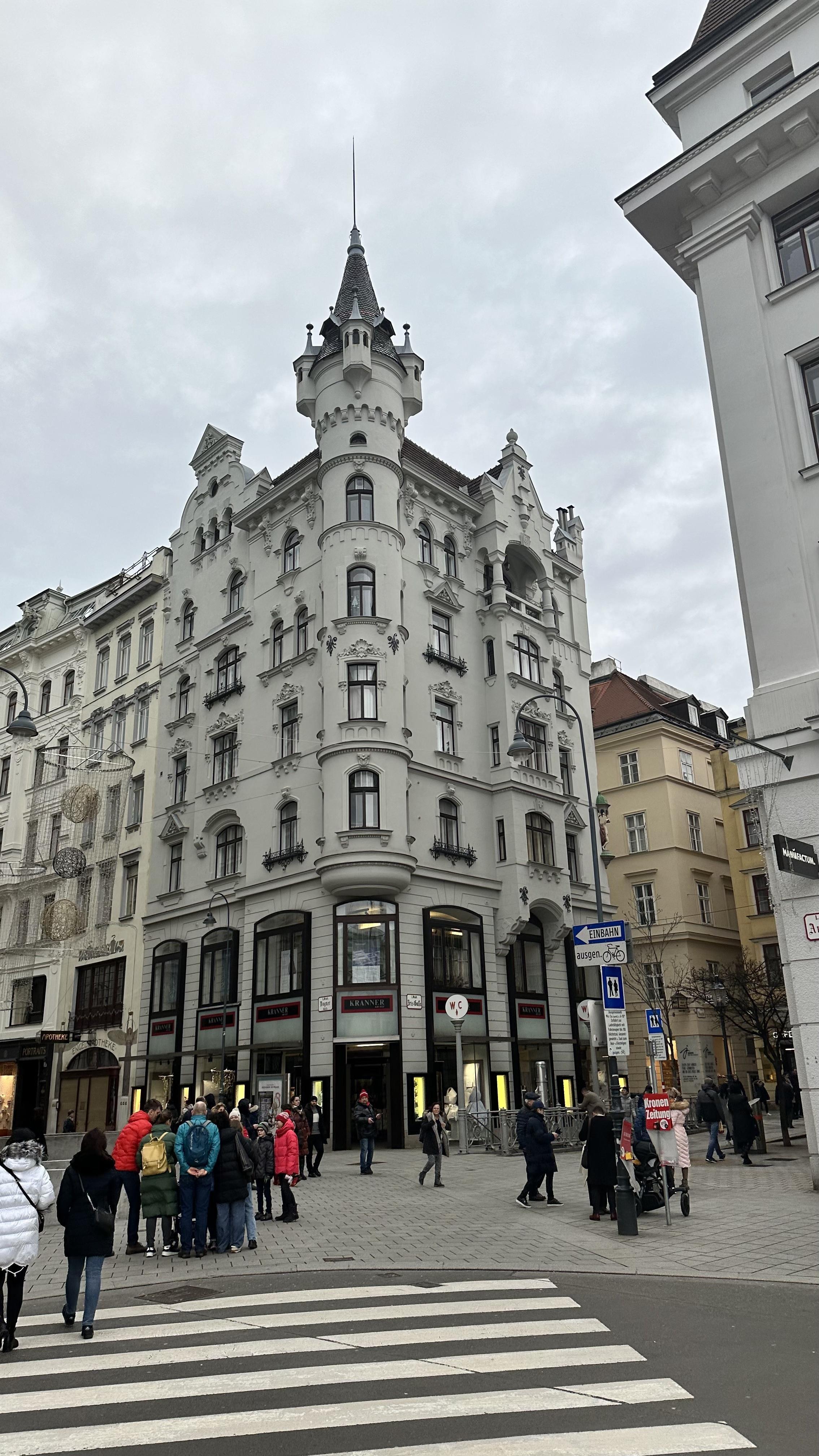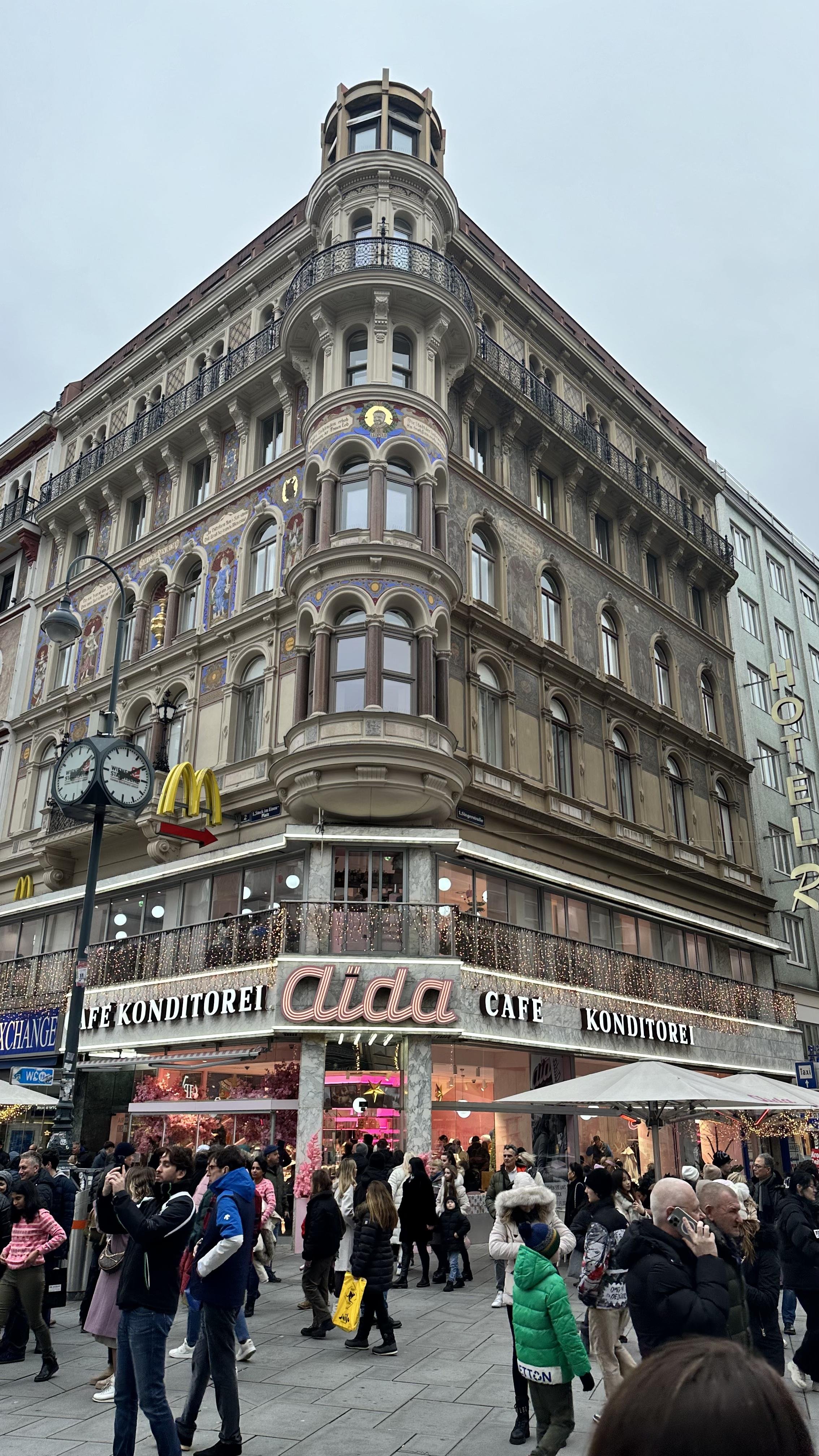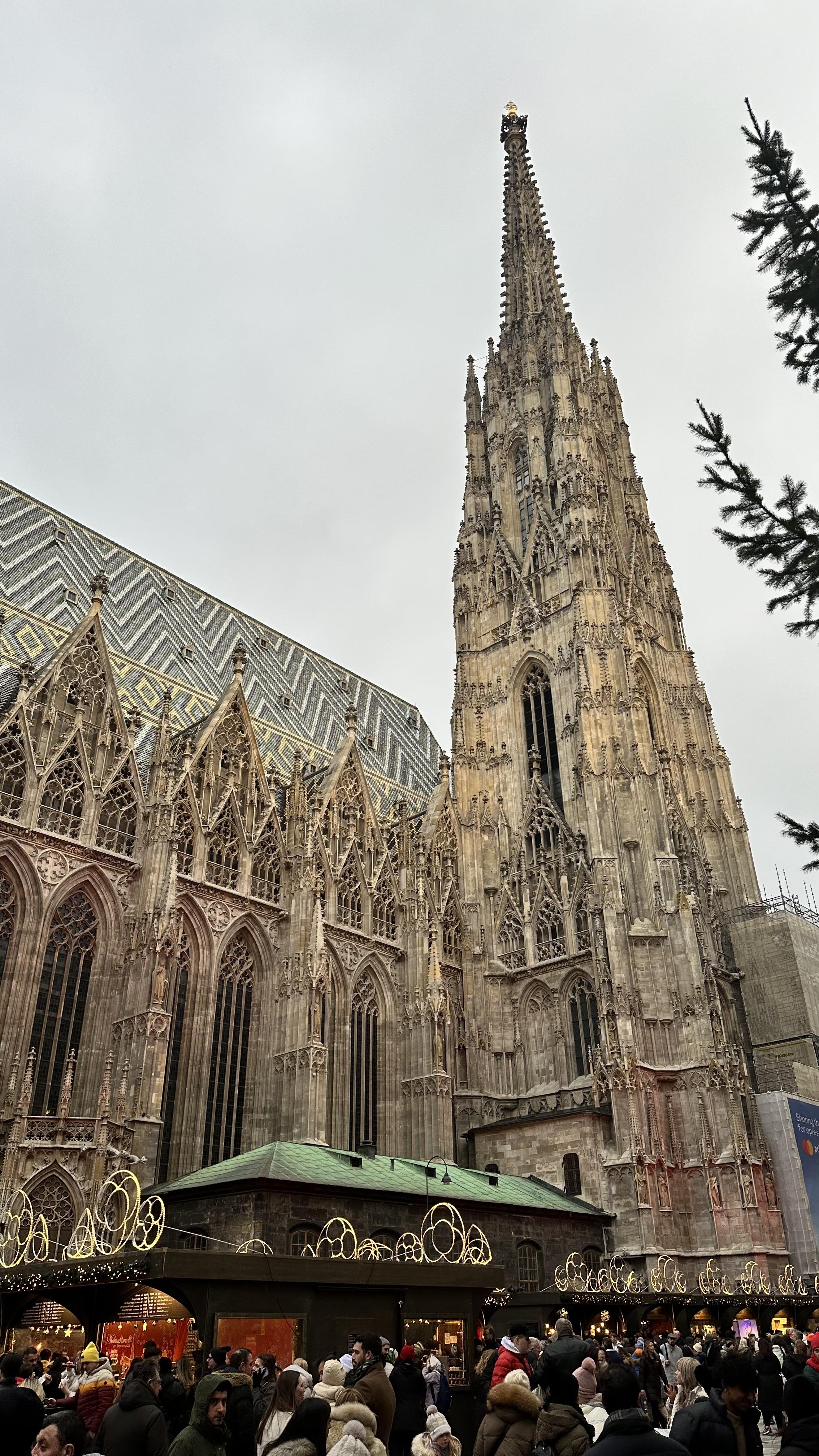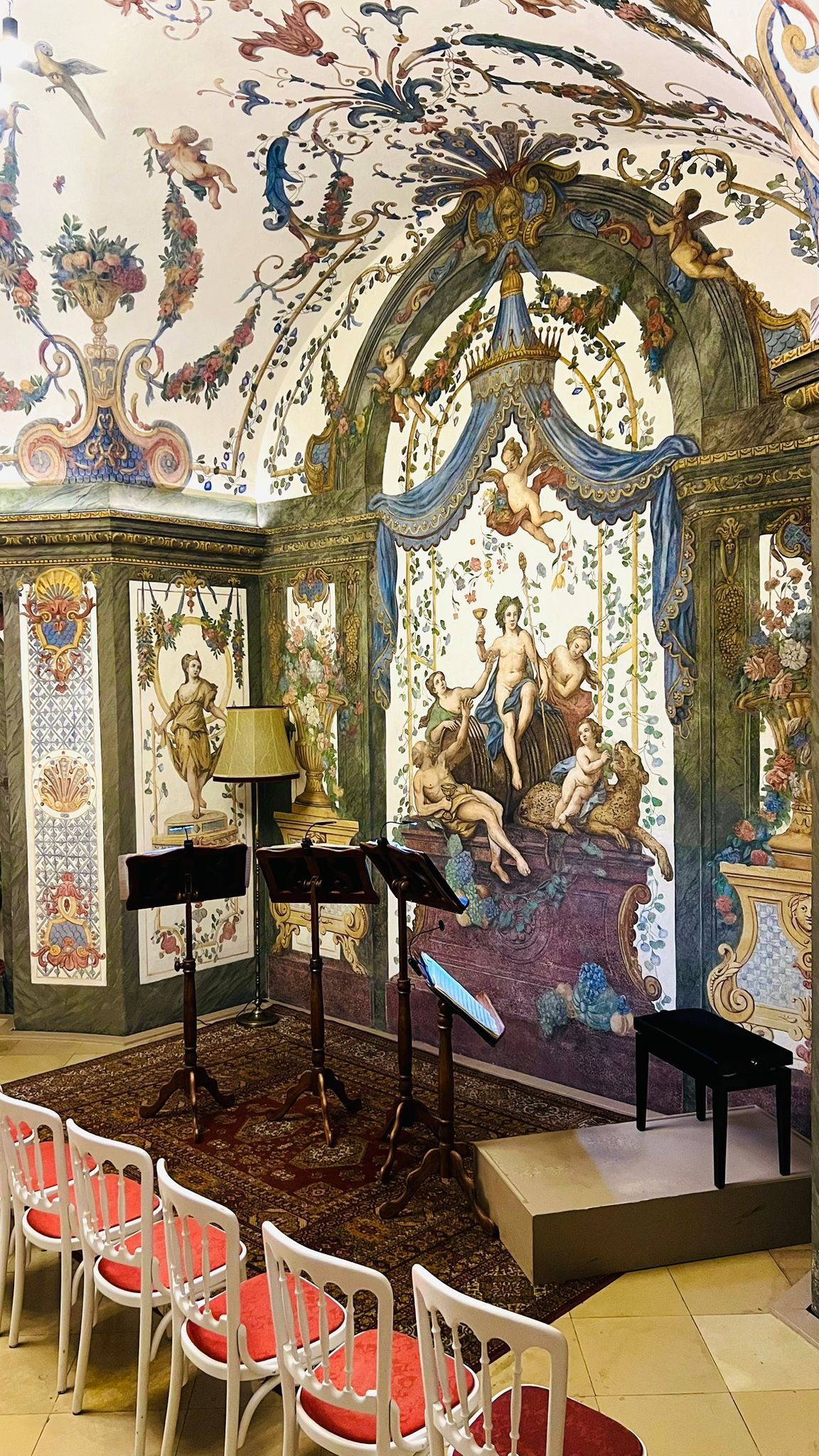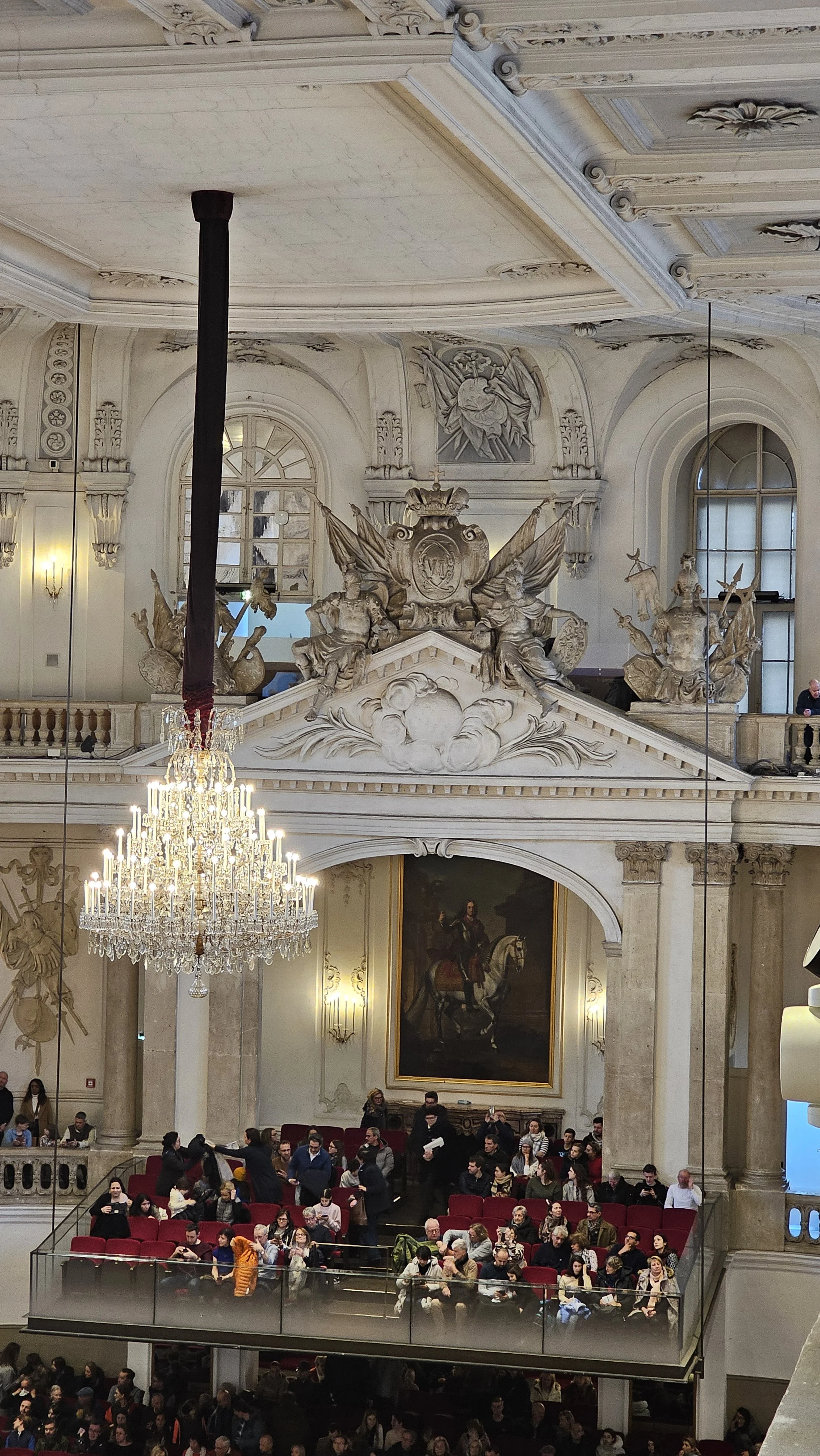Willkommen in Österreich Welcome to Austria
Visiting Vienna for the New Years concert was the key event for us, but there were plenty more reasons why we chose to spend a number of days in Austria, basing ourselves in Vienna.
Let’s start with a quick introduction to Austria!
Austria, formally the Republic of Austria, is a landlocked country in Central Europe, lying in the Eastern Alps. It is a federation of nine federal states, one of which is the capital, Vienna, the most populous city and federal state, and its cultural epicentre. The country occupies an area of 83,900 km2 and has a population of around 9 million.
Austria boasts a diverse history. Formerly a key player in the Holy Roman Empire, it later evolved into the formidable Habsburg monarchy. After World War I, Austria became a republic in 1918, only to be annexed by Nazi Germany in 1938. Post-World War II, in 1955, Austria regained independence, adopting neutrality.
The country is celebrated for its imperial architecture, alpine landscapes, and contributions to philosophy.
Austria is obviously also renowned for its classical music heritage, giving the world iconic composers like Mozart and Beethoven.
The country's Alpine landscapes also attract visitors, offering stunning scenery and outdoor activities. Wait for the next blog to learn more about this part. 😉
Today, Austria thrives as a prosperous nation with a deep-rooted cultural heritage and a commitment to diplomacy.
So, what we were up to?
We based ourselves in Vienna and took the opportunity to explore this magical city using the public transport which is simply amazing! It is the system based on honesty. There are no pay points as you jump on or off the underground, trams or buses, but you are expected to have a ticket. It is as simple as that! We saw controllers only once! We bought a 10 days pass for unlimited travel that included all means of transport, and didn’t have to worry about it.
We spent the first few days visiting a number of the city landmarks including a few beautiful Christmas markets.
Petra and Chase were here for Christmas holidays too, we spent some time together enjoying the atmosphere. Interestingly, this was the very first Christmas we haven’t been together as a family for 30 years! Miroslav, his girlfriend Shannon and grandpa Petar were in Auckland and four of us here in Vienna. It felt a bit strange, I missed our family tradition of cooking meals together and creating a real kitchen chaos. 🥰 There is the first time for everything!
Christmas markets were packed up with people, mulled vine ( Glühwein ), apple strudel and Sacher torte served everywhere. Did we indulge ourselves in the Christmas market traditions - yes 🙌! I’d say we have gained a few kilos here despite massive new records in daily steps! On average we are now sitting at 25,000 steps per day, and in the cold weather. You have to agree with me that we are doing pretty well, especially Neb🥶.
A few fun facts about Vienna & Austria:
There are 2m people living in Vienna across 23 districts. Old Vienna was a fortified city, new buildings were built in the older style to retain the original feel.
In 1869 Vienna Opera house was opened by Mozart himself. It was built in the renaissance style. During the Second World War, it was heavily damaged. It reopened after the war with a Beethoven opera.
Sacher torta is super famous, over 1000 pieces are eaten each day by tourists!
The first time Austria was mentioned in documents goes back 1500 years. The country was ruled for 270 years by one family, the Habsburgs!
Austrian Hungarian empire was so big, it even included Filipins named after the Spanish King Filip II.
The longest reining emperor was Franz Joseph. He was only 18 when he came to power, and ruled for 68 years. He was very conservative, interested in hunting and military. When he was 20 he married Elizabeth (Sissi). She was 15 years old and had to undergo a “crash course” of becoming an empress. When she was 21 she had three kids, she became loved by Hungarians and as we already know Elizabeth was killed in Geneva by an Italian anarchist.
Wolfgang Amadeus Mozart was born in Salzburg. He was a Wonder-child. He perfected playing piano at the age of 3. At the age of 6 he came to Vienna and gave a concert for the Habsburg family. He died at the age of 35 of rheumatic fever.
Now that you’ve learned a bit about the history, I would like to mention a few of my favourite points of interest, remembering we’ve seen many more and all were super 🆒!
Schönbrunn Palace was the main summer residence of the Habsburg dynasty. We attended the apple strudel show and got the best recipe from the Maria Theresa cook book! It was the BEST strudel we’ve ever tried!
The Schönbrunn Gloriette in the palace gardens of Schönbrunn Palace is the largest and perhaps the most well-known of all gloriettes. It’s stunning at daylight, we were lucky to see it at the sunset too and the views of the Vienna city are spectacular.
Michaelerplatz - one of the (many) joys of Vienna is finding little places to stand in and feel like you travelled back in time. One such place is Michaelerplatz, the historic city-centre square at one end of the Hofburg palace complex.
Stand on Michaelerplatz, and historic houses, churches, and gateways from 1220 through to the early 1900s surround you. Numerous horse-drawn carriages enhance the timeless feeling; the square also provides parking space for the traditional city fiakers.
Cafe Landtmann, is Vienna's most sophisticated coffee house. After waiting in line for 30 mins, we enjoyed the beautiful traditional food and celebrated Christmas and birthdays with Petra and Chase. From the famous Wiener schnitzel, to beef goulash, from a warm hand made apple strudel to a chestnut puree desert served in a flower shaped base made of the dark chocolate, my favourite desert by far. The food was so yummy😋!
Cafe Central - after a long 45mins waiting in a line to enter we were left speechless. 😶
The Café Central opened in 1876. A well known regular guests were a revolutionary (Leo Trotsky), a psychiatrist (Sigmund Freud), a poet (Alfred Polgar, Stefan Zweig, Peter Altenberg), and an architect (Adolf Loos). Amid coffee, cake, and cigars, Vienna's greatest thinkers gathered in the cozy atmosphere of the city's most beautiful coffeehouse. Even the president Tito loved to spend the time in this iconic place. Today, the menu features typical Viennese dishes, traditional coffee blends, and sweet temptations from the in-house pastry chef.
We have learned that Viennese coffee house culture is the UNESCO world heritage. We ordered special coffees and Kaiserschmarrn, also known as emperor’s mess, it is a fluffy and light, giant pancake, which is torn into bite-size pieces after baking, and served with the warm plum compote, oh oh oh delicious 😋.
St. Francis of Assisi Church also known as the Emperor's Jubilee Church and the Mexico Church is a Basilica style Catholic church that looks like it’s just landed from Disneyland. Built between 1898 and 1910, it was consecrated in 1913. It is located on the Mexikoplatz near the banks of the Danube.
The square was named Mexikoplatz in 1956, to honor the support Mexico gave to Austria in 1938, when it was the only country at the time to protest the annexation of Austria by Nazi Germany.
The Stephansplatz is a square at the geographical centre of Vienna. It is named after its most prominent building, the Stephansdom, Vienna's cathedral and one of the tallest churches in the world.
It was destroyed by fire, not bombs during the Second World War. Nine federal parts of Austria joined the efforts and funded the rebuilding. Although public opinion was originally skeptical about the combination of the mediaeval cathedral and the glass and steel building, it is now considered an example of how old and new architecture can mix harmoniously.
It was so so cool to welcome the New Year in the open, dancing the waltz to the live music with hundreds of people enjoying such a spectacular night.
The Mozarthaus sits right in the city centre in a historic quarter. The building is a townhouse restored to its 18th-century grandeur. The museum essentially invites you on a gentle stroll through a late 1700s world of music and society, most importantly, you’re breathing the very air that Mozart breathed over 200 years ago! How cool is that?!
We attended a classical music concert in the actual house, in a small beautiful and incredibly acoustic room with stunning frescoes. We listened to the quartet of musicians playing Mozart’s music. Oh oh what a treat! Thank you Petra for finding it for us🤗.
Austrian National Library, State Hall
Europe's largest Baroque library houses over 200,000 historic books on its richly decorated 128 wooden shelves.
Particularly impressive are the approx. 15,000-volume collection of Prince Eugene of Savoy, bound in red, blue, and yellow Morocco leather, as well as one of the biggest collections of Reformation writings by Martin Luther. Unfortunately, these cannot be read here – the works are too fragile and precious for that.
I could stand there for hours to observe its richness, its beauty, its history, the architecture, the books and the stories behind the amazing frescoes, statutes of 16 emperors and the central statute of the Emperor Charles VI, hewn in marble.
The Spanish Riding School is an Austrian institution dedicated to the preservation of classical dressage and the training of Lipizzaner horses. It is one of the "Big Four", the most prestigious classical riding academies in the world.
Lipizzaner horse is a European breed of riding horse developed in the Habsburg Empire in the sixteenth century. It is of Baroque type, and is powerful, slow to mature and long-lived; the coat is usually grey, and it takes 15 years to change its colour to white.
The Spanish Riding School was named for the Spanish horses that formed one of the bases of the Lipizzaner breed, which is used exclusively at the school. One of the original studs used to develop the breed was Lipizza, now called Lipica near Trieste in modern Slovenia, which gave its name to the breed.
A big thanks to my IAG colleagues for a gift voucher, watching the training session was great fun!
Hofburg
The name translates as "Castle of the Court", which takes us to its origins when it was constructed during the Middle Ages. Initially planned in the 13th century as the seat of the Dukes of Austria, the palace expanded over the centuries, as they became increasingly powerful. Today is used by the Austrian Federal President.
The Palace faces the Heldenplatz ( Heroes Square). Many important actions and events took place here, most known is the Adolf Hitler’s ceremonial announcement of the Austrian annexation to Nazi Germany on 15 March 1938.
On the plaza, there are two equestrian statues representing two heroes:
The statue of Archduke Charles of Austria known as one of Napoleon’s more formidable opponents, glorifying Habsburg dynasty as great military leaders.
The statute of the Prince Eugene of Savoy who was one of the most successful military commanders of his time, and rose to the highest offices of state at the Imperial court in Vienna. Funnily enough he was very short (150cm), French believed he was too small to be in military so he dressed as a woman to leave Paris and joined Habsburg military.
Maria-Theresien-Platz is a large public square, very beautiful in Christmas time.
At the center of the square stands the Maria -Theresia Memorial, a large statue depicting Empress Maria Theresa. She was a ruler of the Habsburg dominions from 1740 until her death in 1780, and the only woman to hold the position in her own right.
Hundertwasserhaus is the expressionist landmark, the artists creation of brightly painted, natural apartments block with a forested roof and balconies in sync with the nature. We had a lovely coffee stop here and were surprised to see so many tourists admiring this interesting place.
St Charles Church is commonly called the Karlskirche is a Baroque church considered the most outstanding baroque church in Vienna, as well as one of the city's greatest buildings. The church is dedicated to Saint Charles Borromeo, one of the great counter-reformers of the sixteenth century.
Judenplatz is a town square that was the center of Jewish life and the Viennese Jewish Community in the Middle Ages, exemplifying the long and complex history of the Jews of Vienna. Two extremely important elements of Judenplatz you will not want to miss are the Jewish Museum and the Museum Judenplatz.
The Judenplatz Holocaust Memorial by Rachel Whiteread is Judenplatz's central place of remembrance. Around the memorial you'll find tiles in the ground, each with the names of Austrian Jews who perished during the Nazi period.
What surprised us the most was learning that it took Austrian government over 50 years to acknowledge the wrongdoings and genocide committed during the Second World war, it happened in 1991. Unbelievable!
We also found the names of cities who welcomed Jews forced to leave Vienna. Among many there is Šabac city. And that takes me to another interesting and connecting story!
My aunty Saveta was from Šabac. Aunty Saveta was Dad’s oldest sister. Since his Mum died when he was only two years old, aunty Saveta assumed the mother role for all her siblings. She was my favourite aunty by far. She would travel in an overnight train from Šabac to Split to visit us, always bringing us the famous “Rosen Torta”, that only she knew how to make. As soon as she would enter the house she’d ask for a sip of “rakija” (grappa) to wash down the dust from the train! 😉 She was such a gentle, sweet, humble, caring, loving person.
Following the visit of the Judenplatz I was curious to know if there was a connection between the Jews running away from Vienna and my aunty’s place Šabac.
And guess what?!
I got to learn that Šabac welcomed 2,000 Viennese Jews and helped them out to start a new life together within the local community. My dear aunty Saveta helped a lady called Maria for years, hiding her in her own tiny place. At the end of the war, Maria gifted a beautiful candle holder that’s now proudly sits in Miloš’s apartment in Belgrade (Saveta’s grandson). Such a lovely memory of troubled times and my aunty and uncle’s good hearts, who despite the risk of being punished by the Nazis still decided to help Maria❤️.
I also got to learn that among the 2,000 Jews were two young boys who played soccer very well. Back then they were so good we could compare them to Messi today. They joined the Šabac local soccer club called Mačva and through their skill and talent Mačva became one of the top clubs in the European region!
I believe it is fascinating how people stories intertwined through different historical events show that whatever we do today will eventually impact those who come after us, and it’s down to us to do good deeds and leave the world to be a better place.
As you can see we’ve had a great time in Vienna, it is a magical city that has so much to offer. We didn’t have the time to visit many museums and art galleries, we have to leave something for the next time!
While in Vienna, we benefited from the proximity of Europe and jumped to a couple of other places. I will share those stories in the next blog, until then enjoy the history, architecture and culture through many amazing photos 🎼🤗🧡.
Vienna Photo Album
